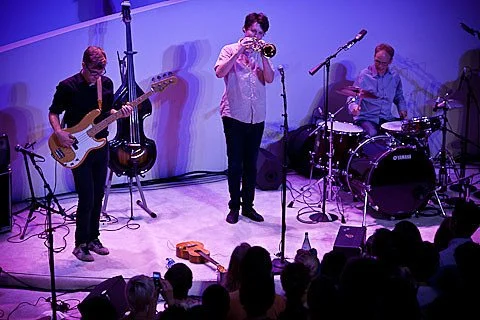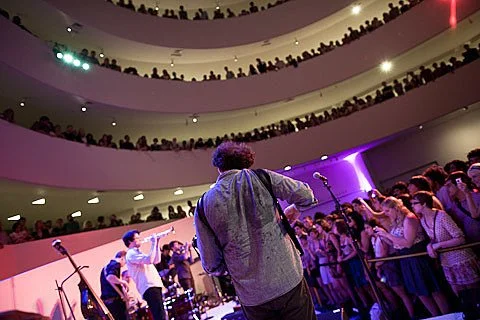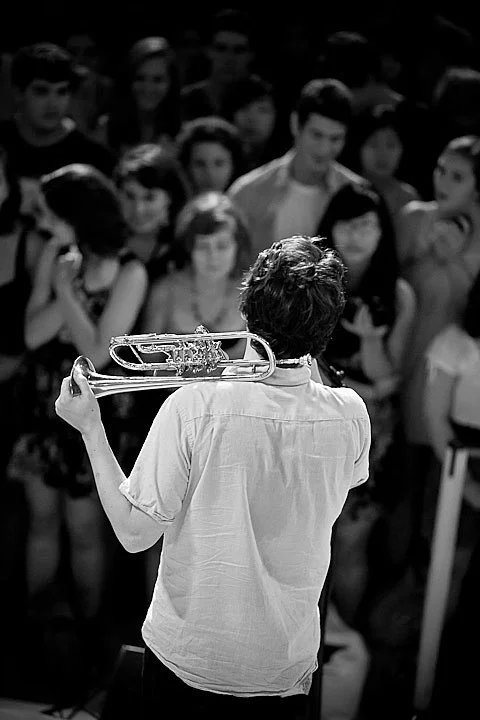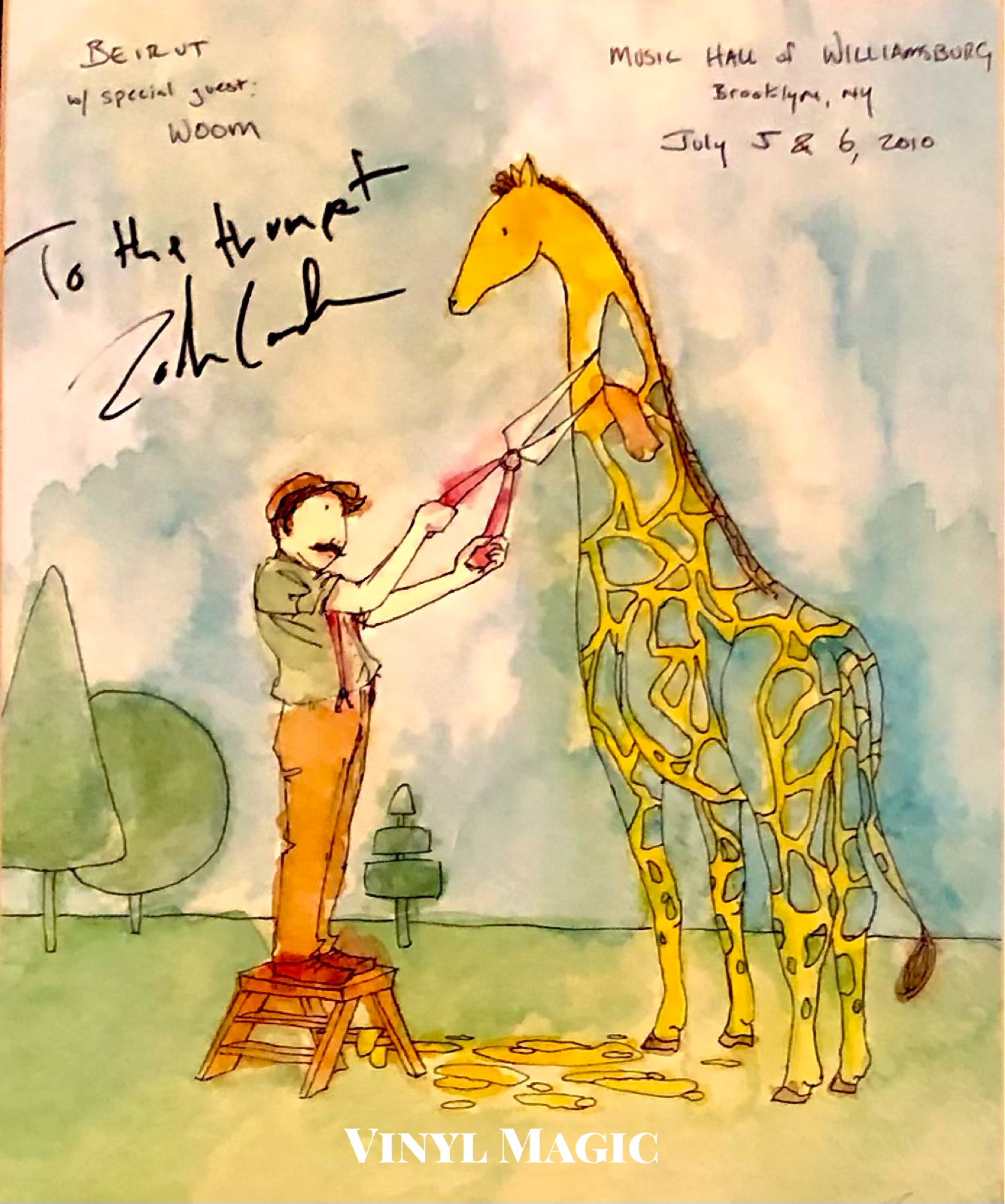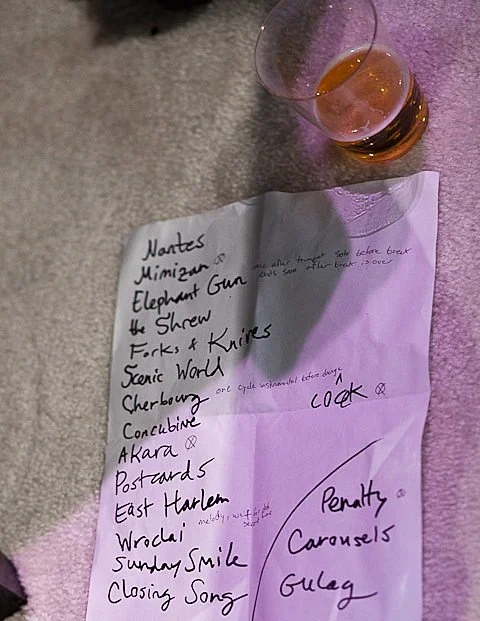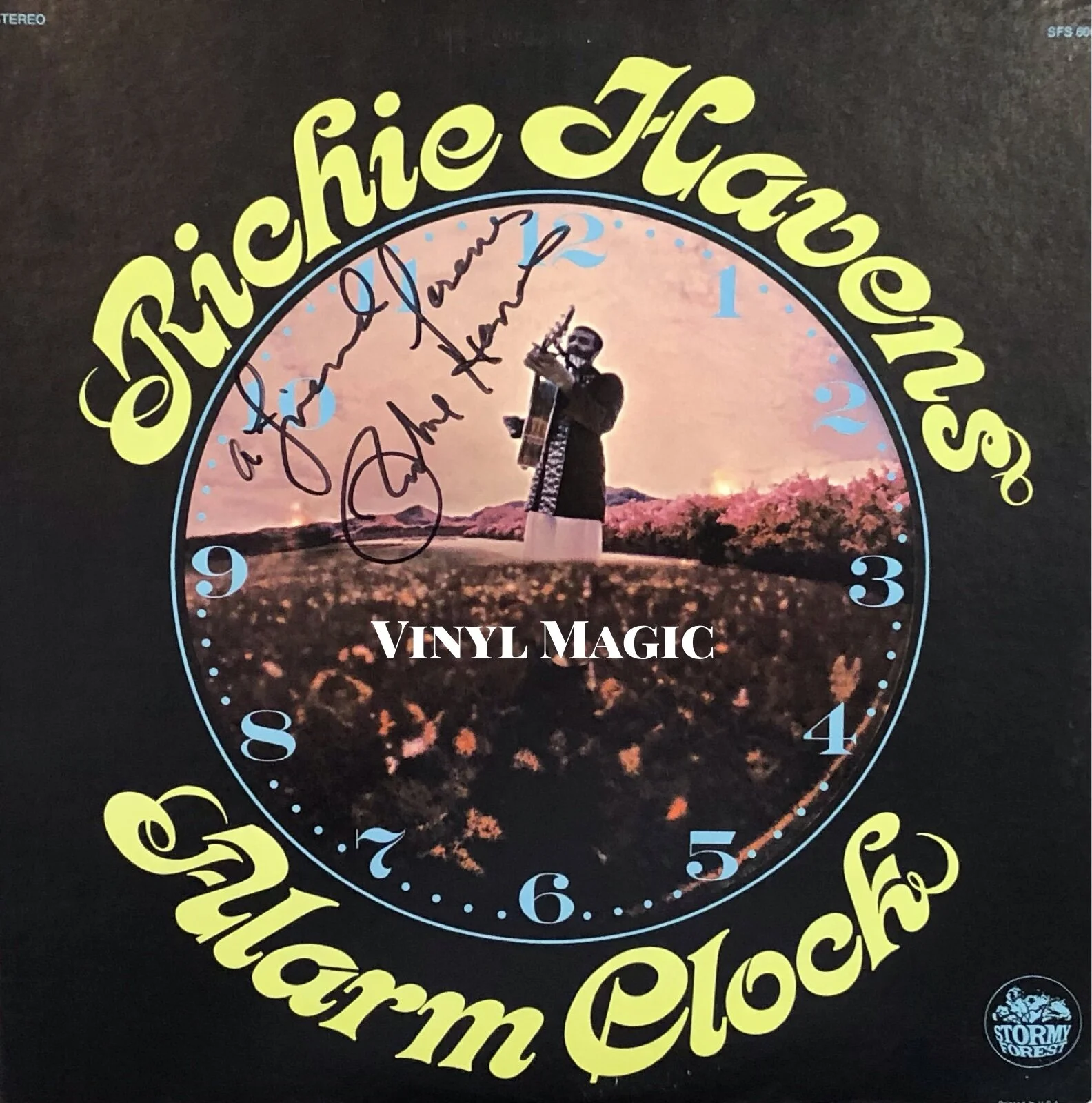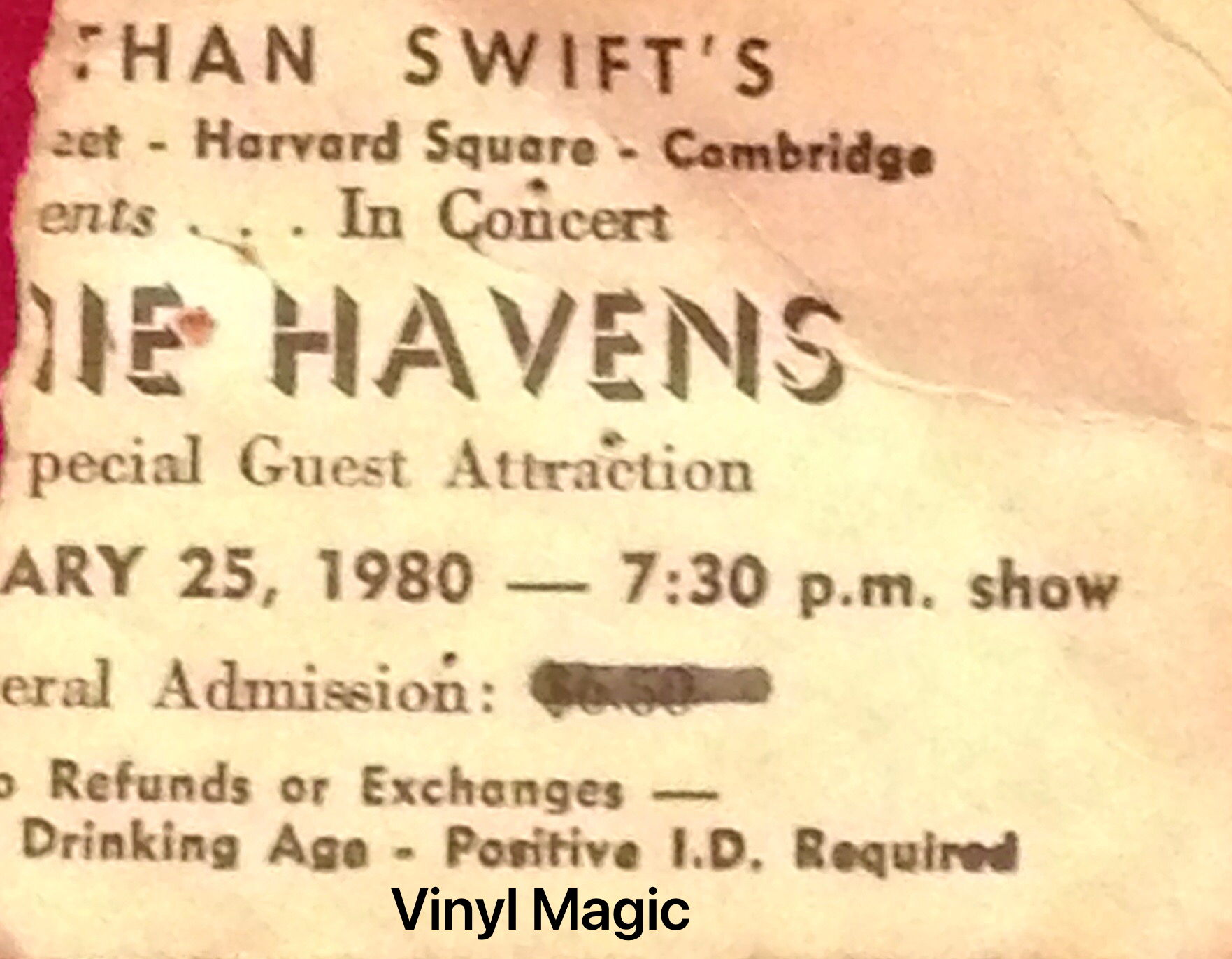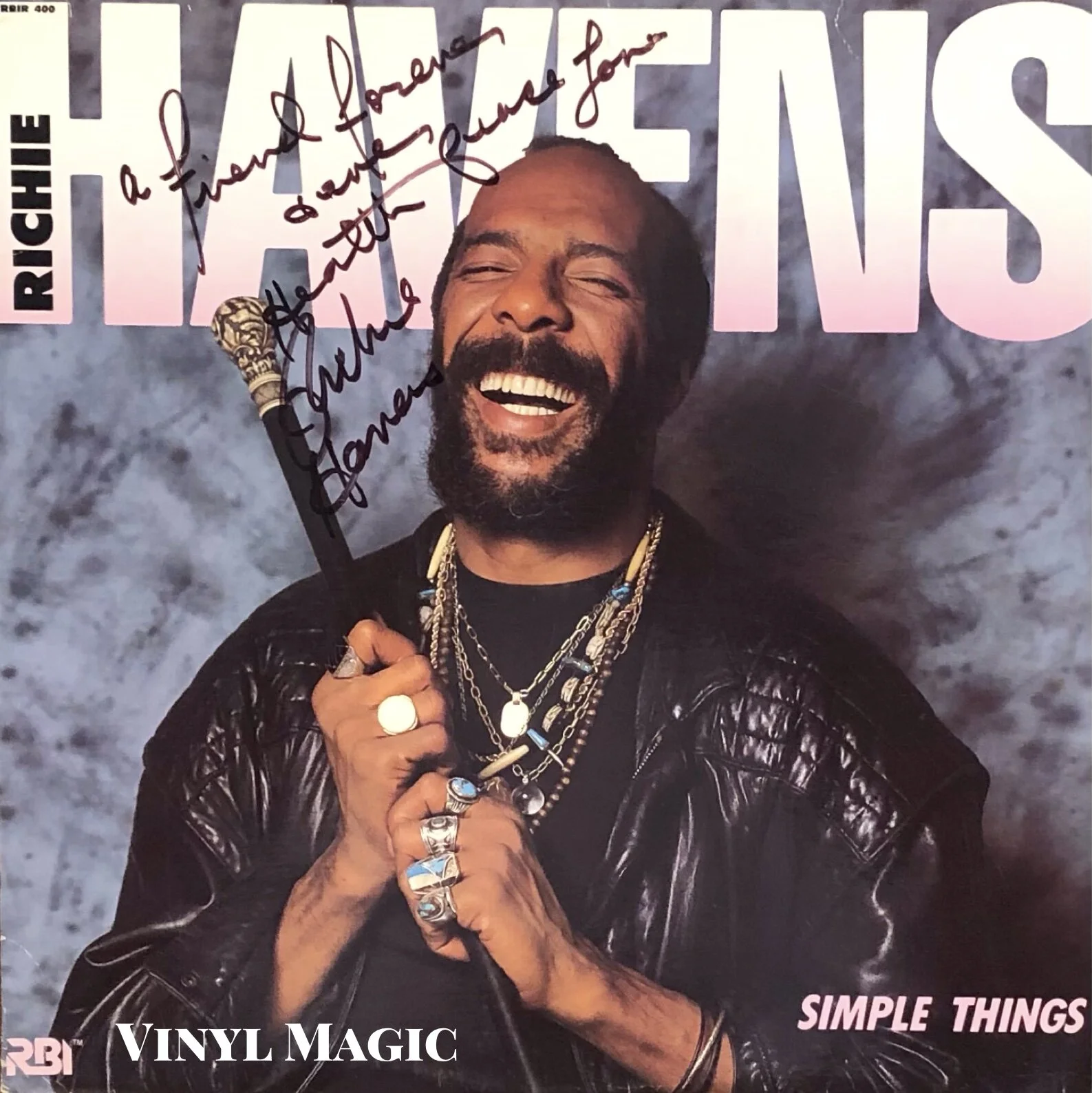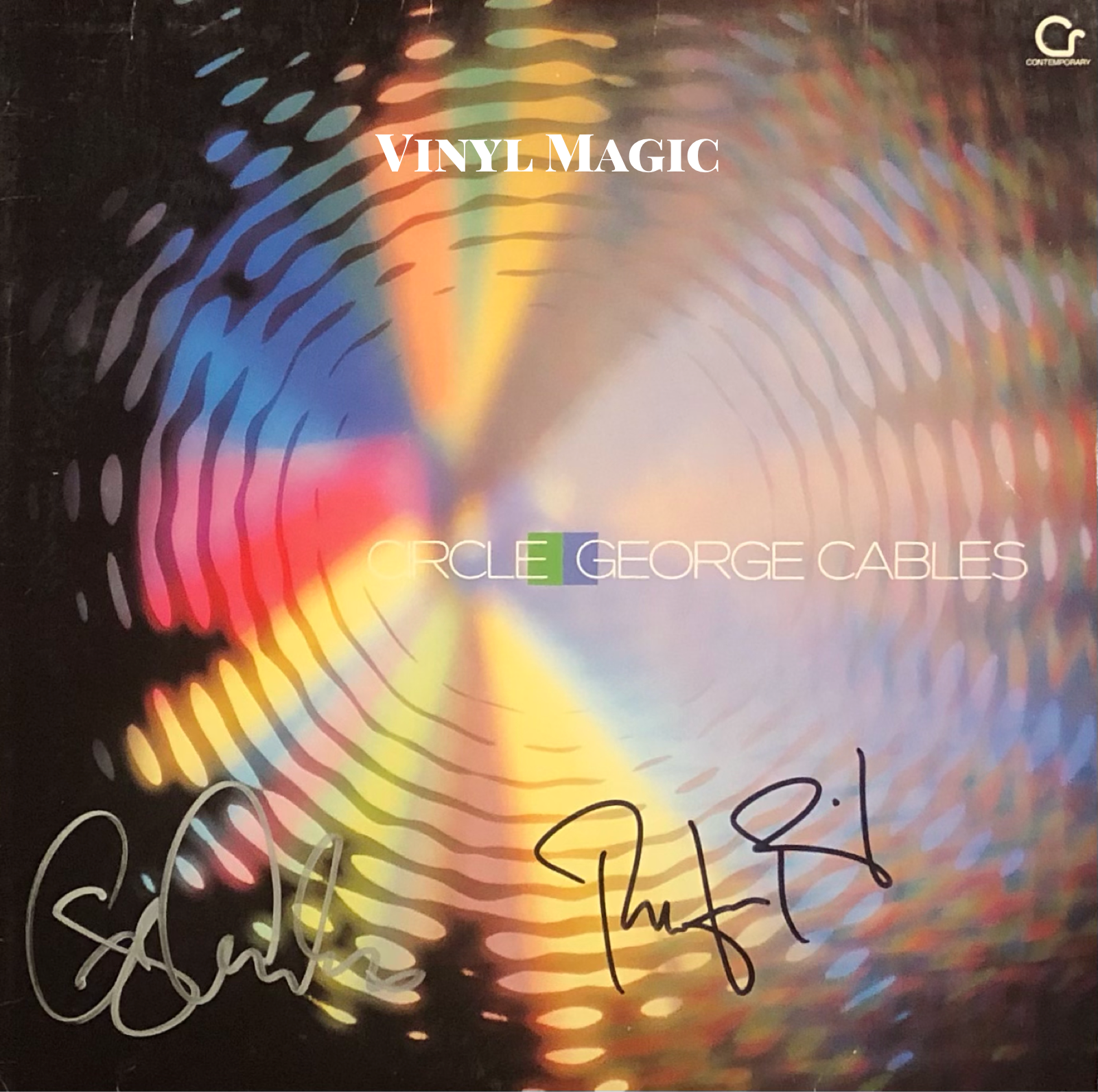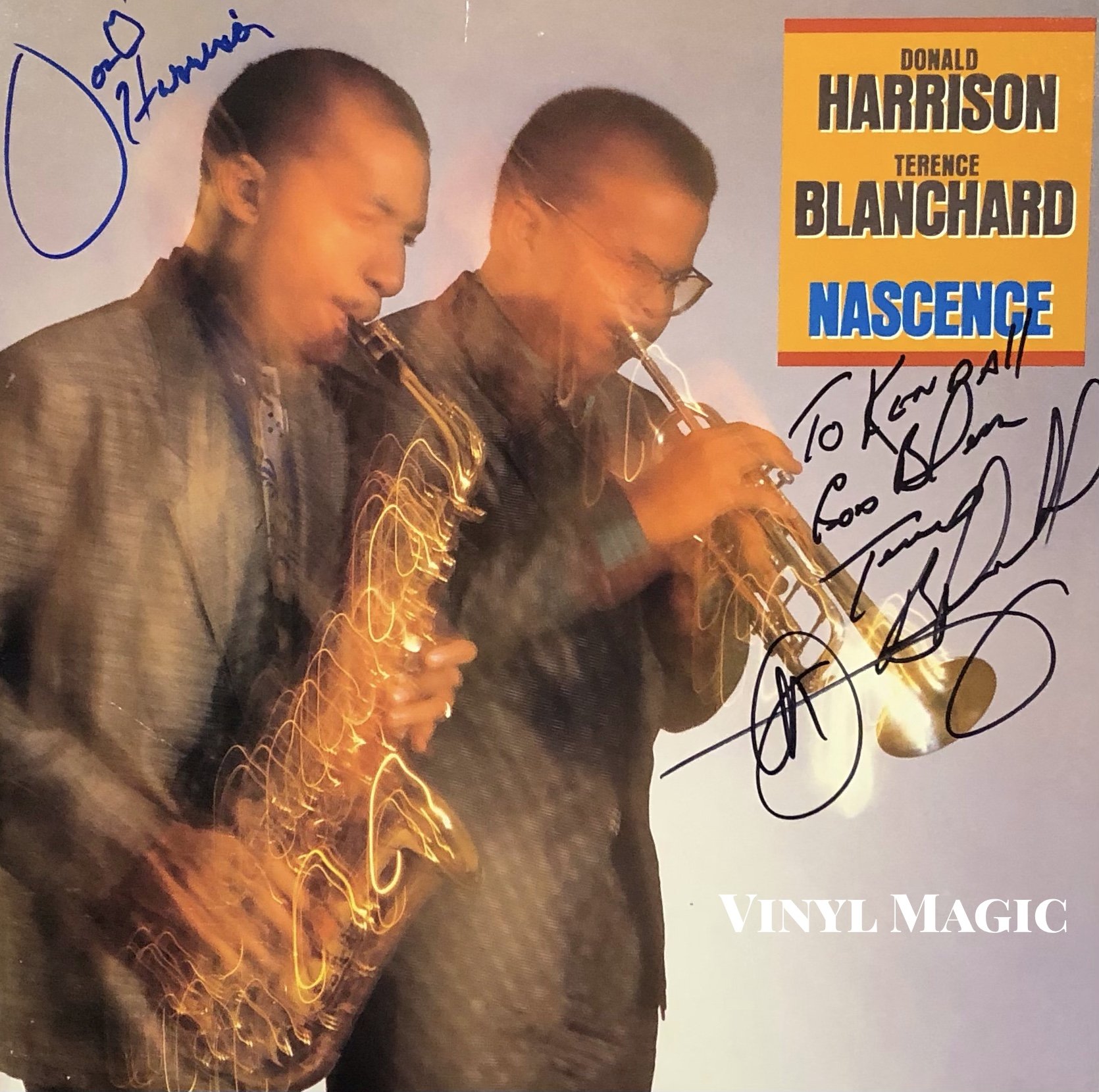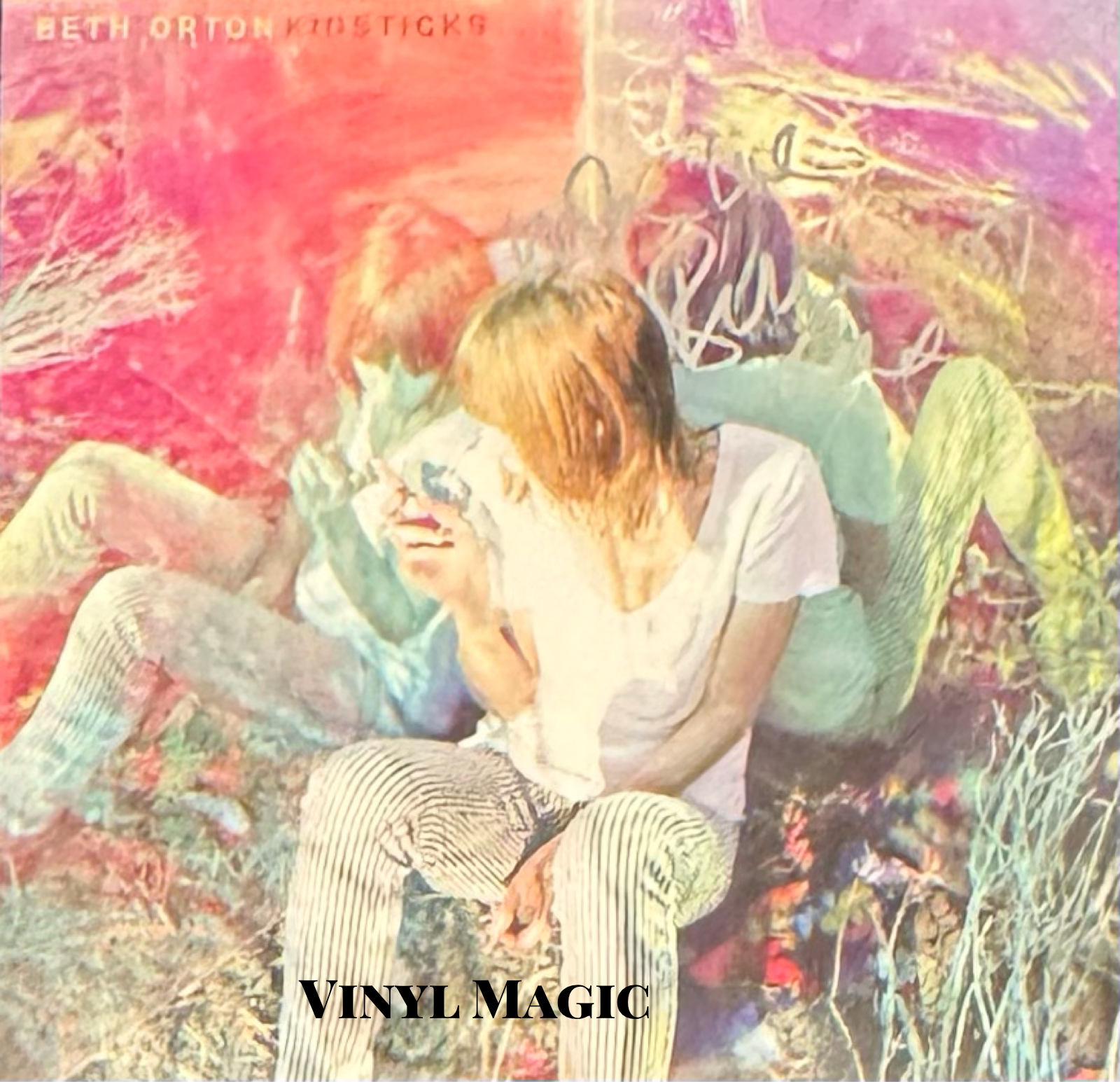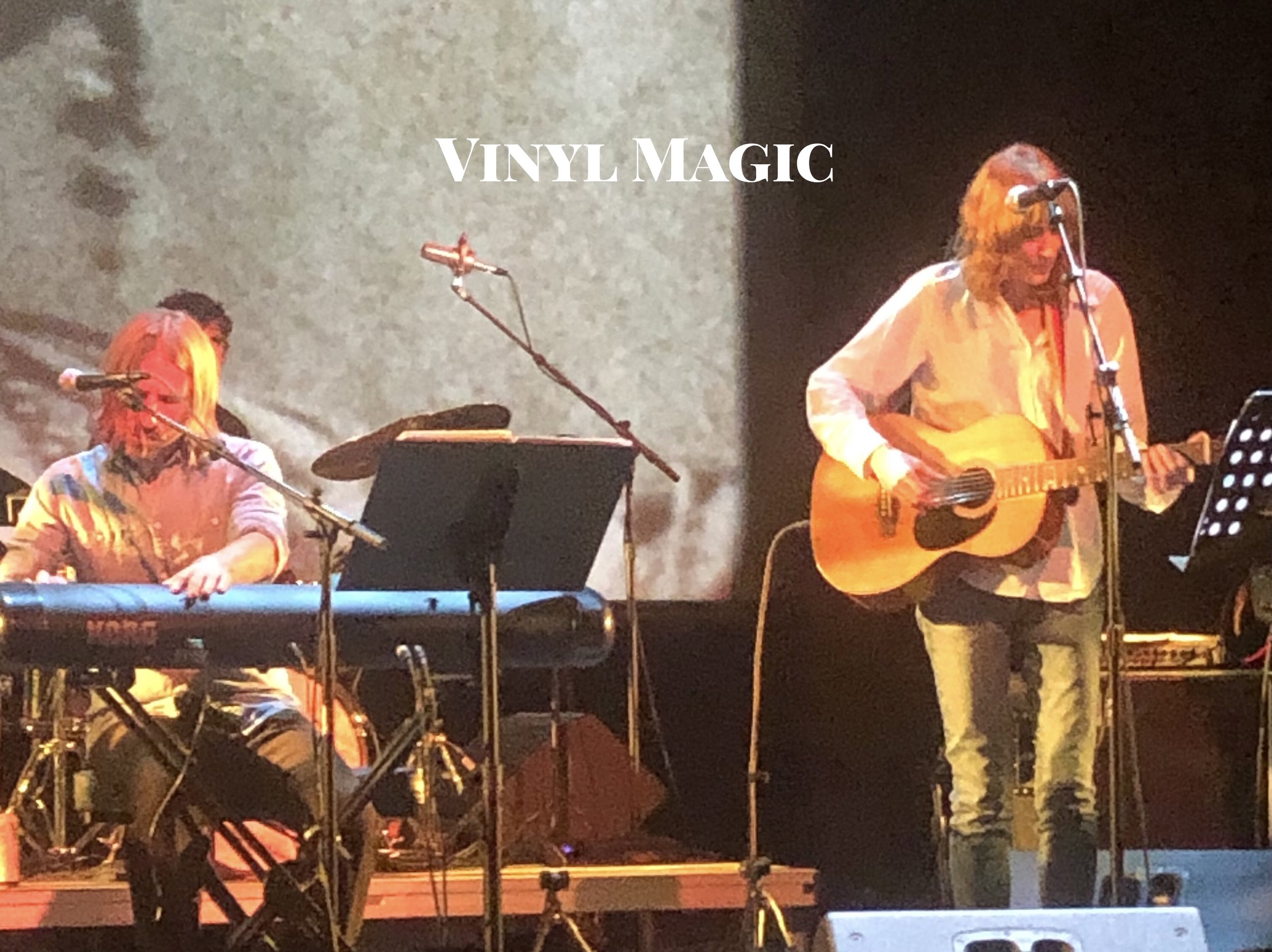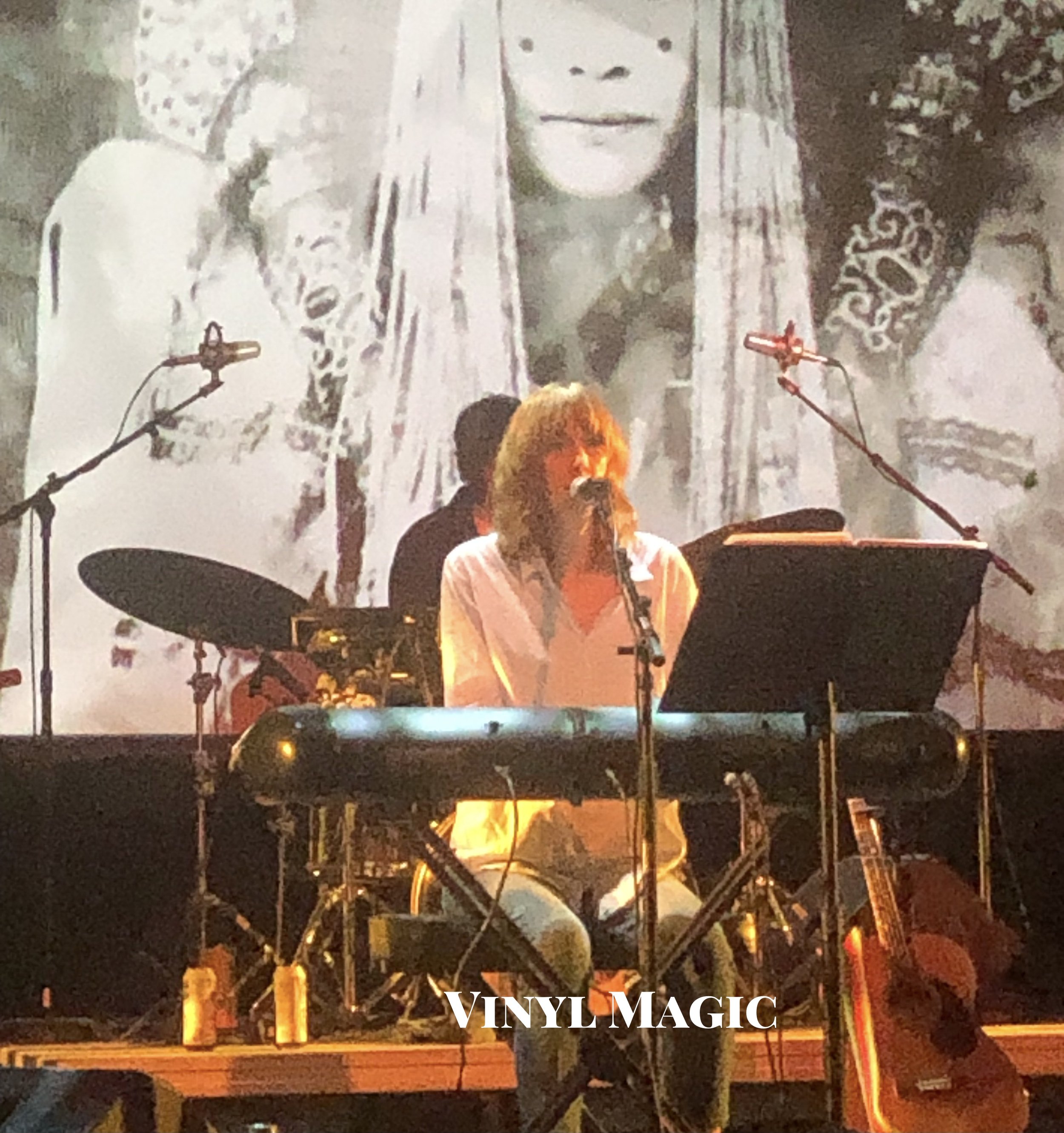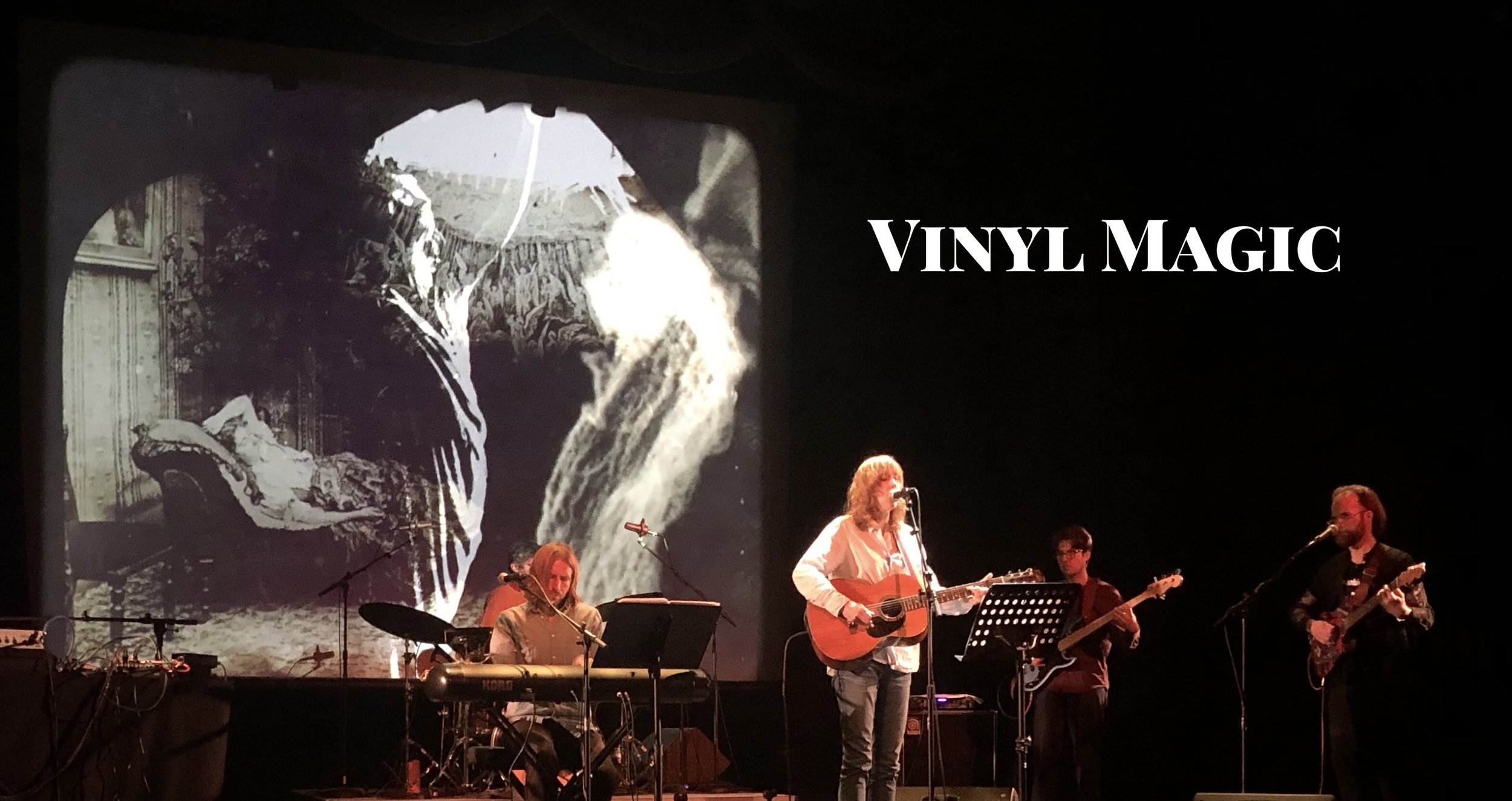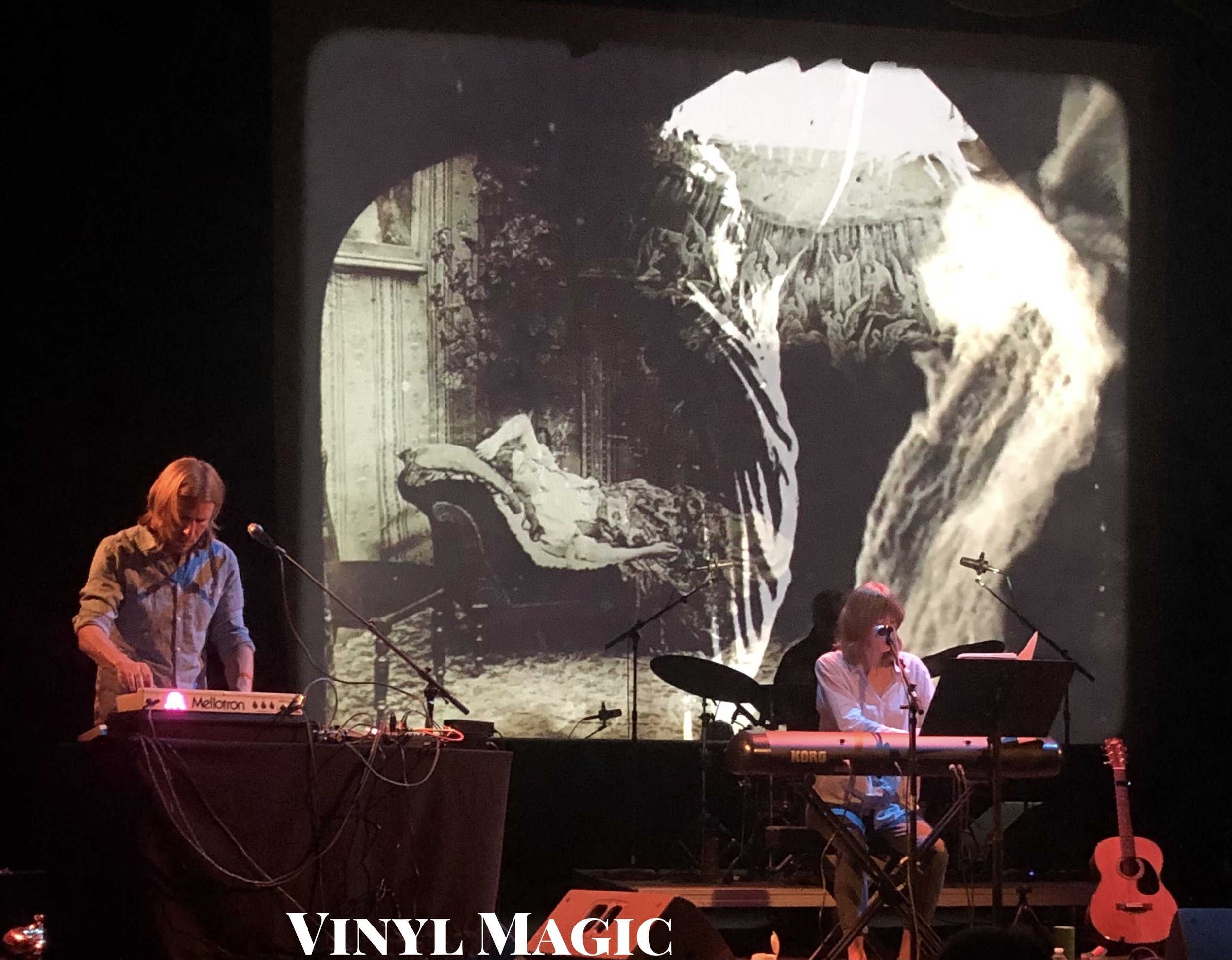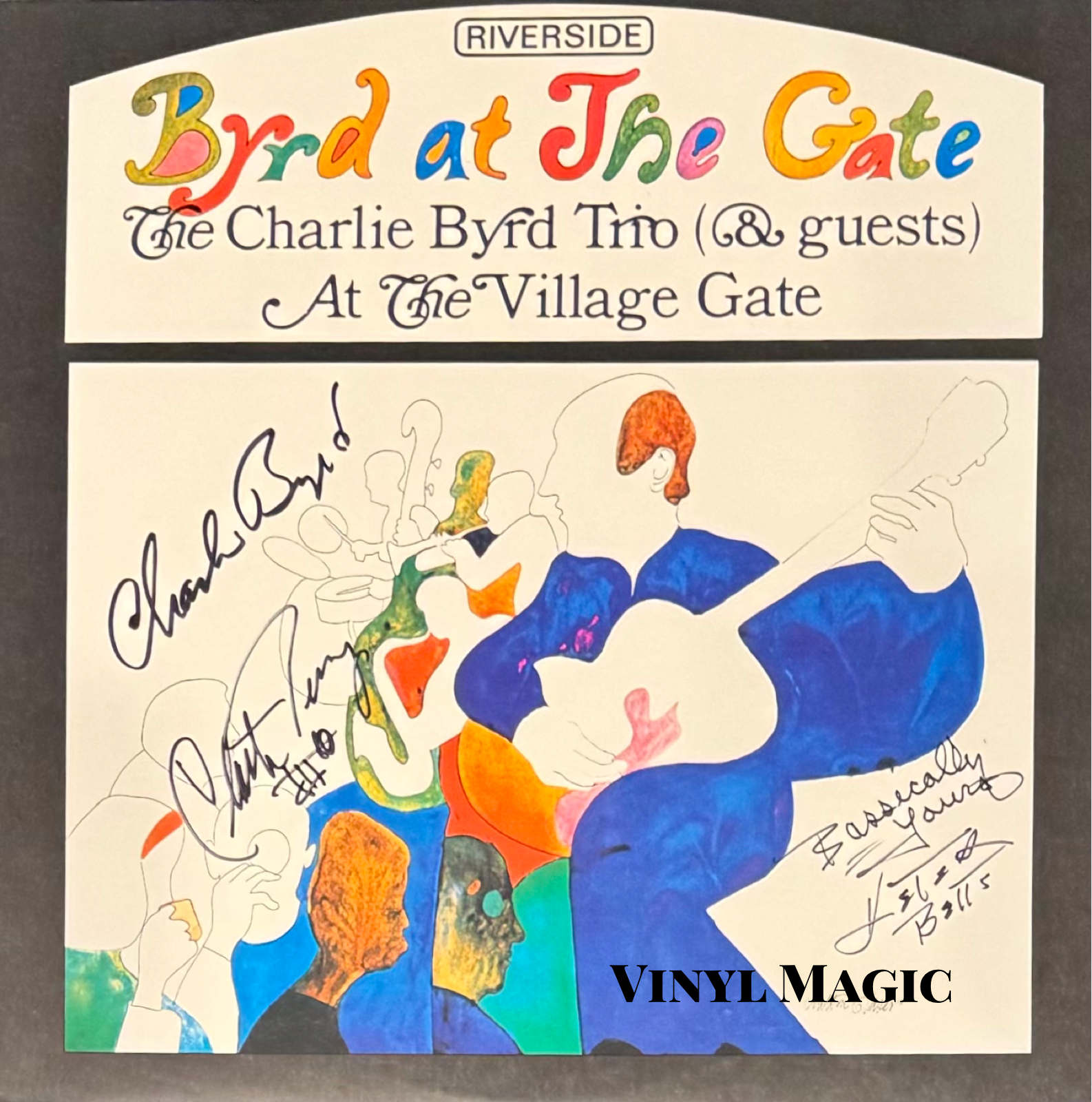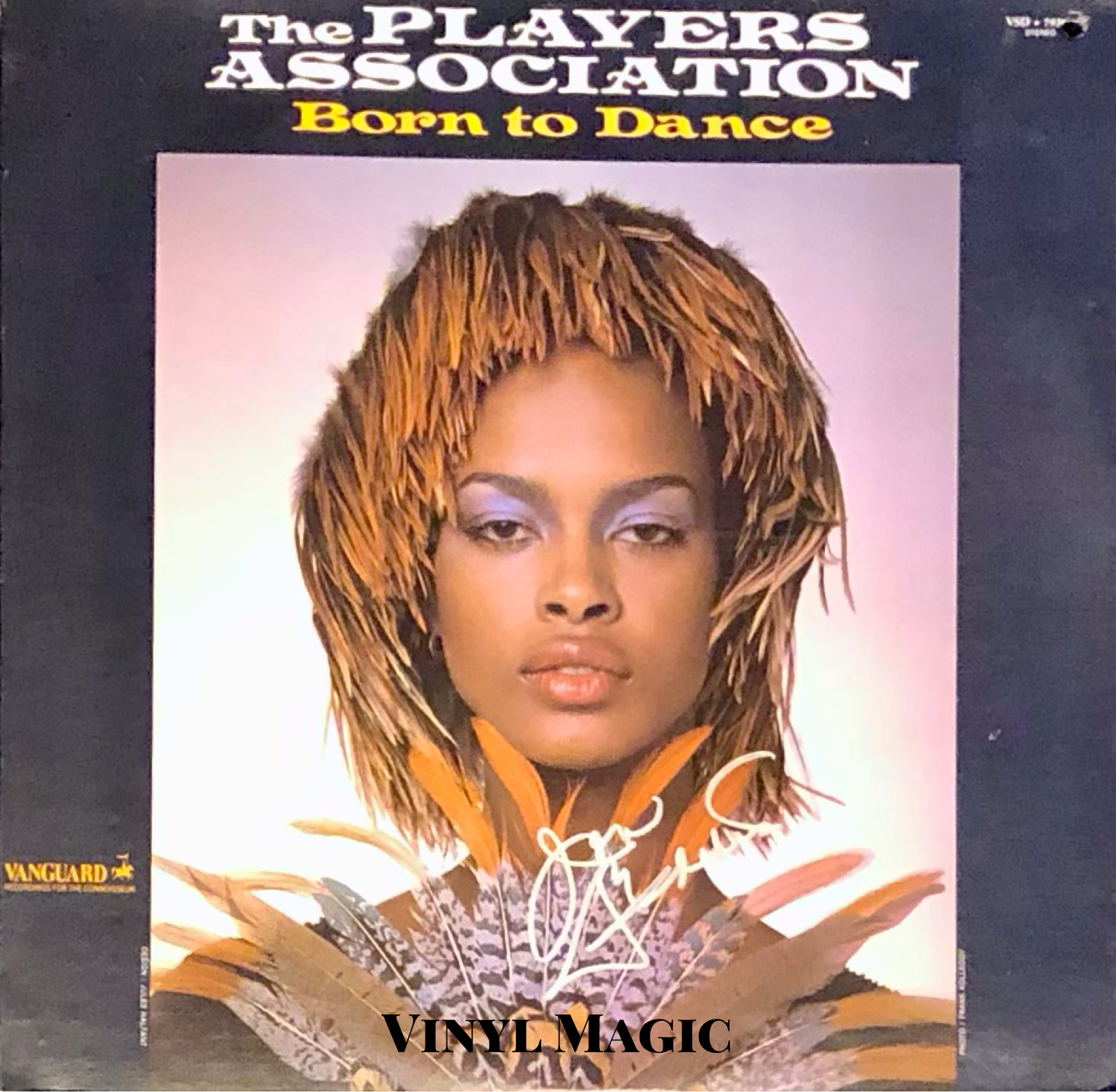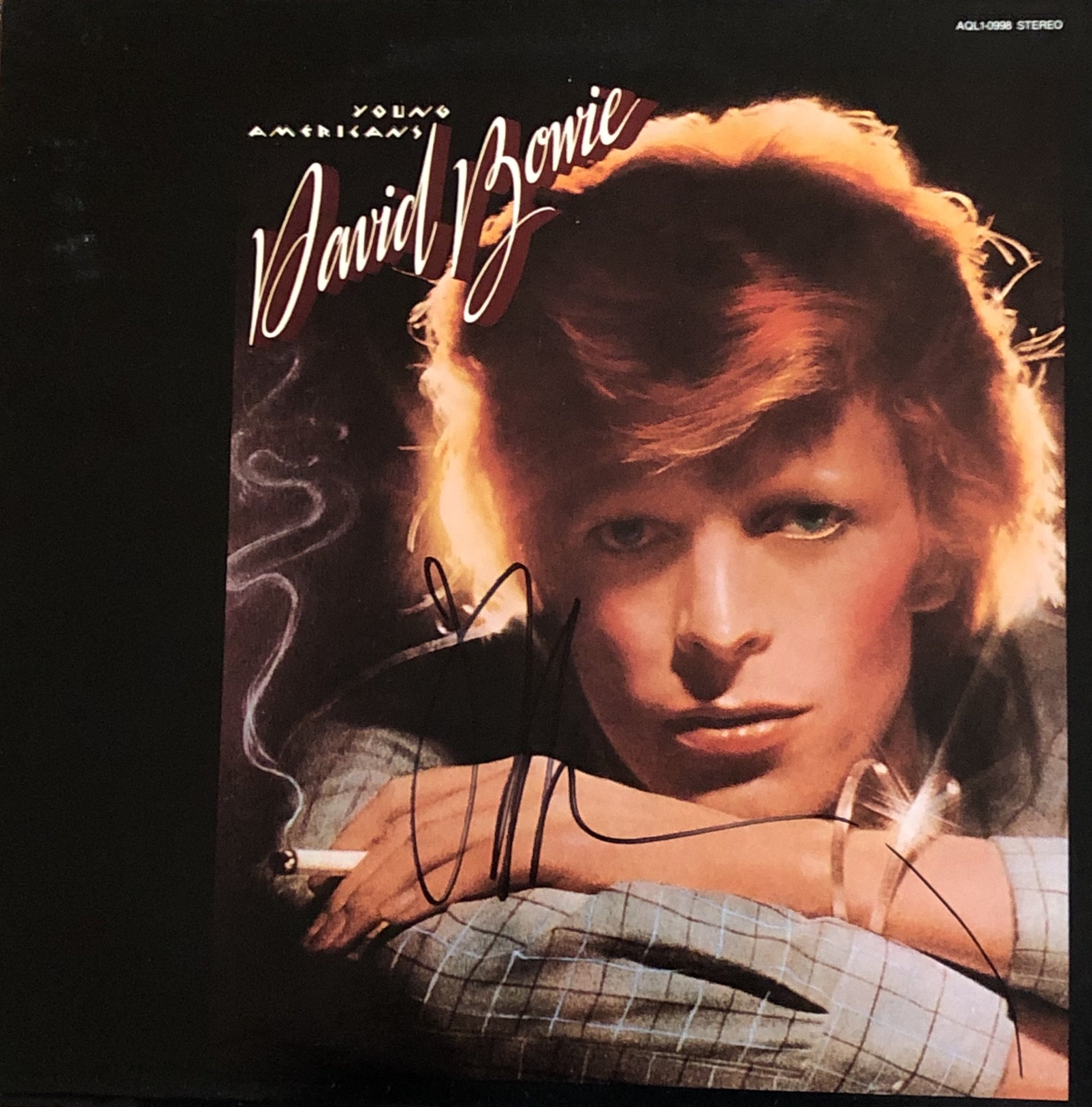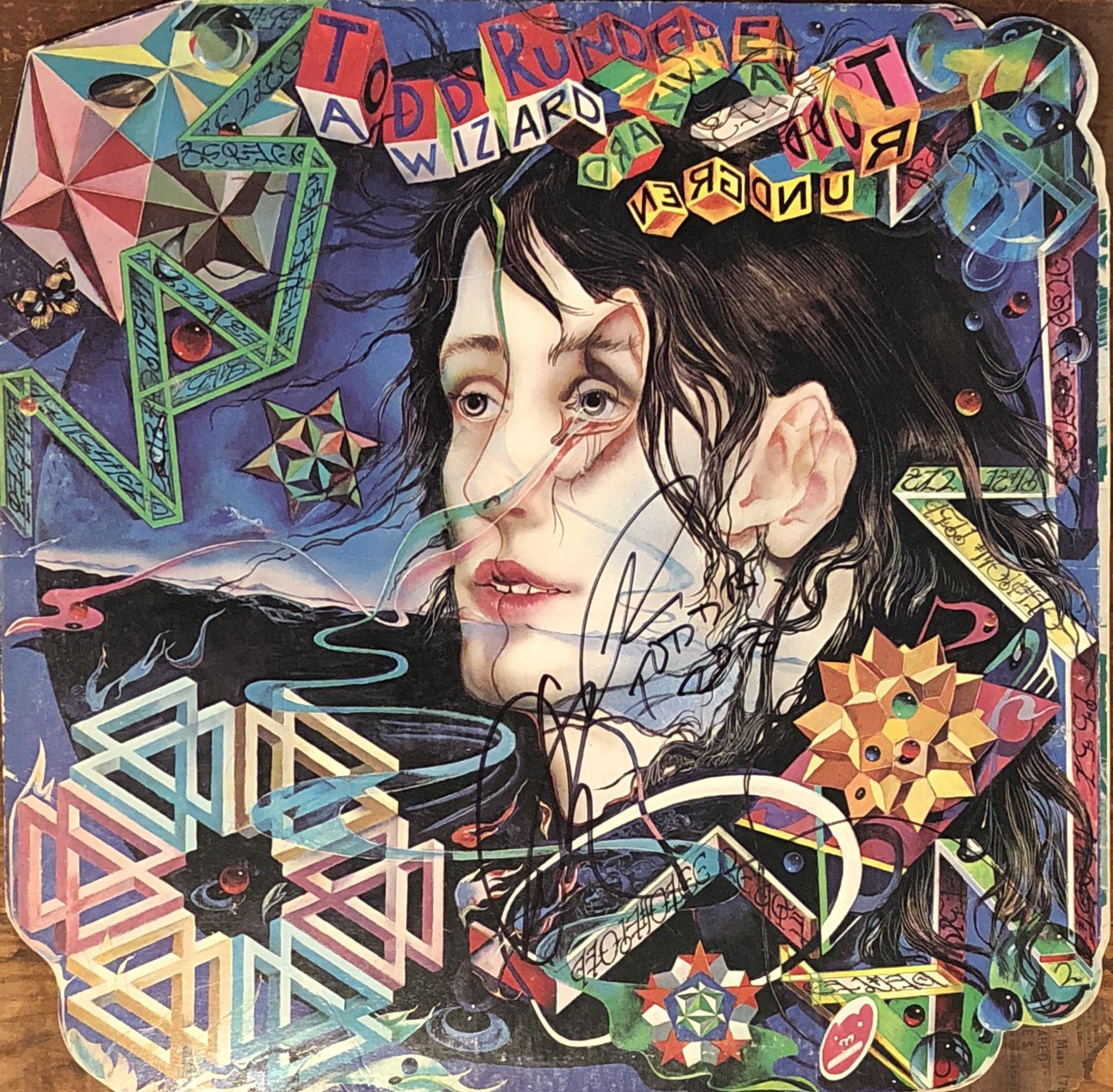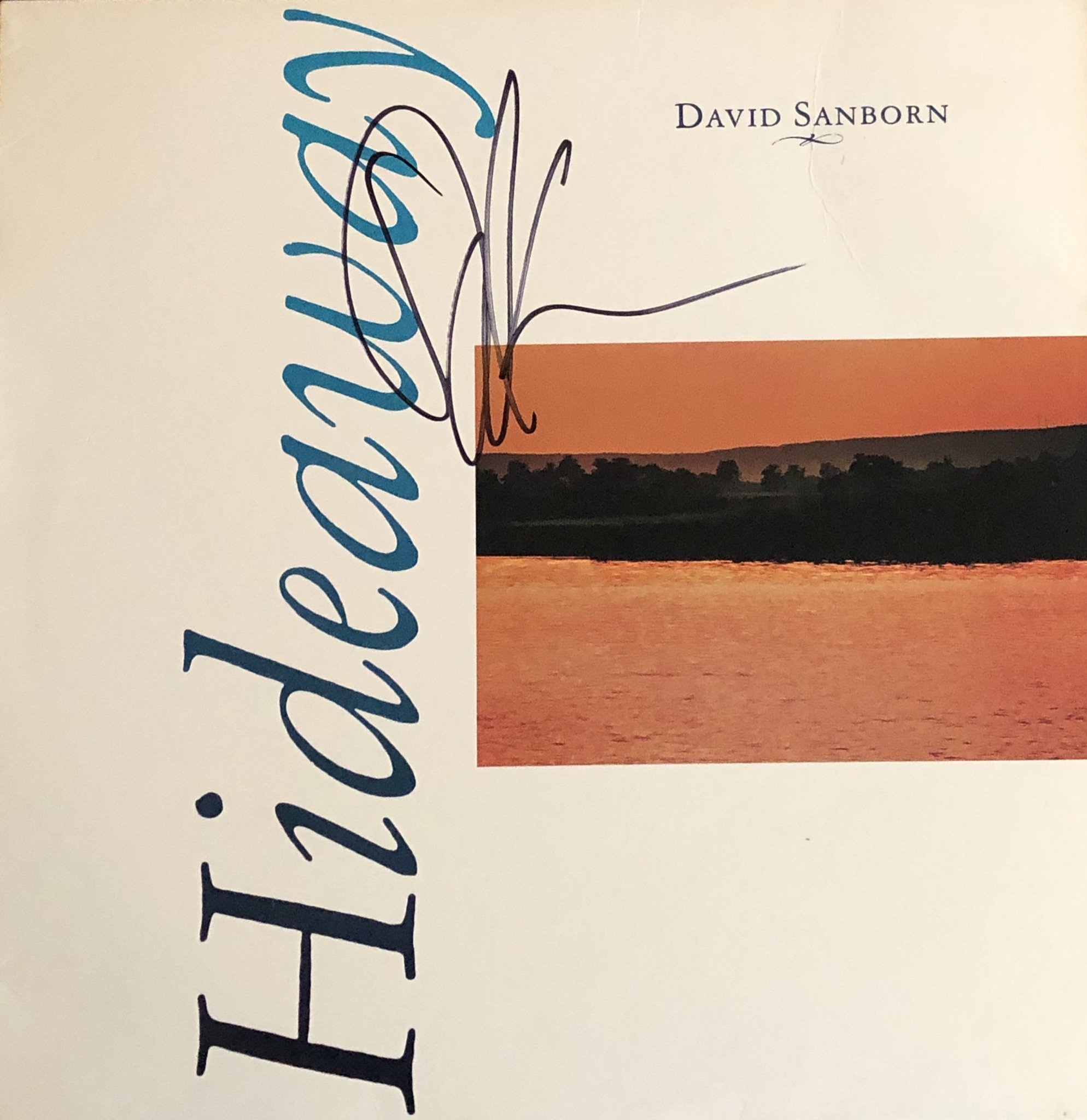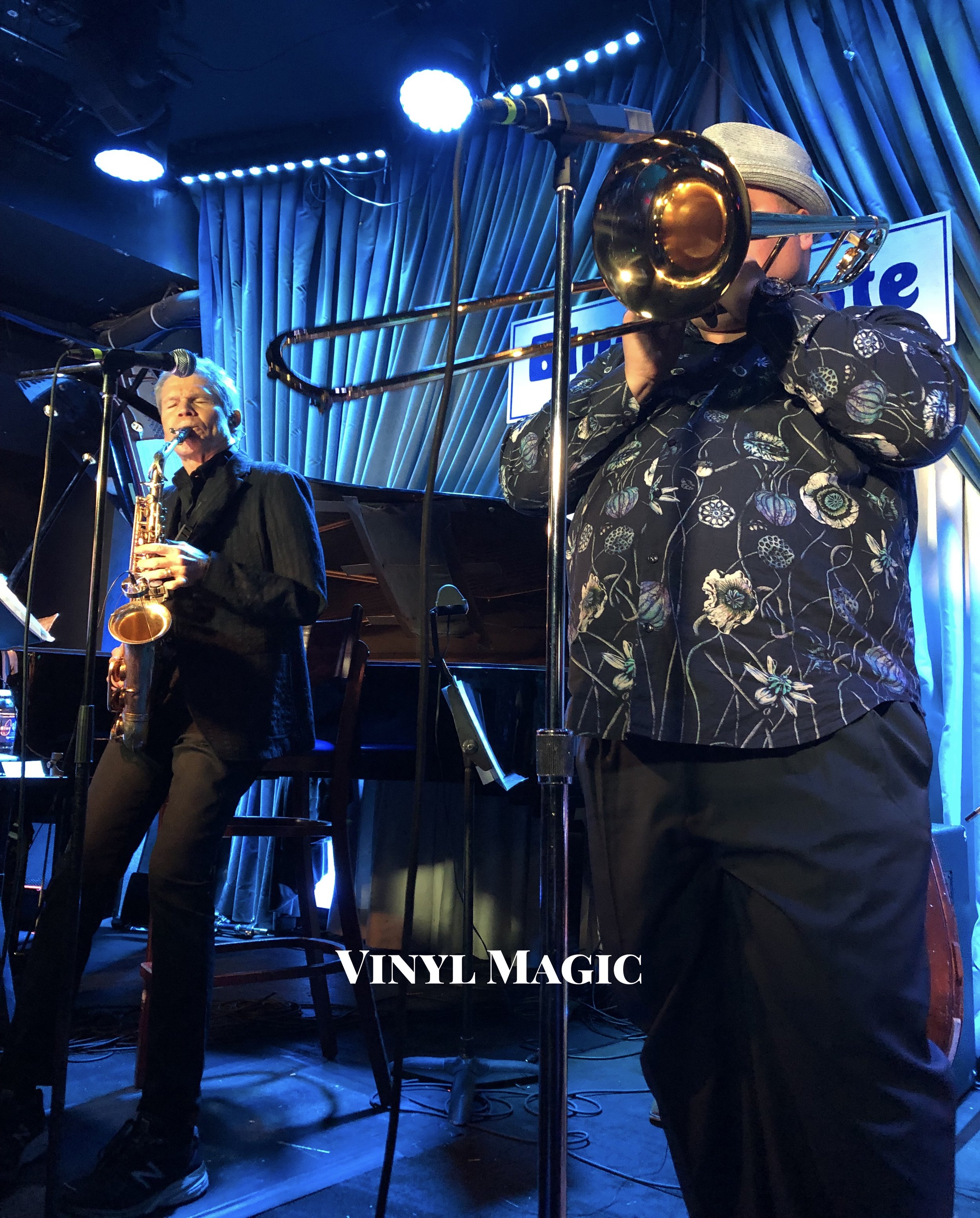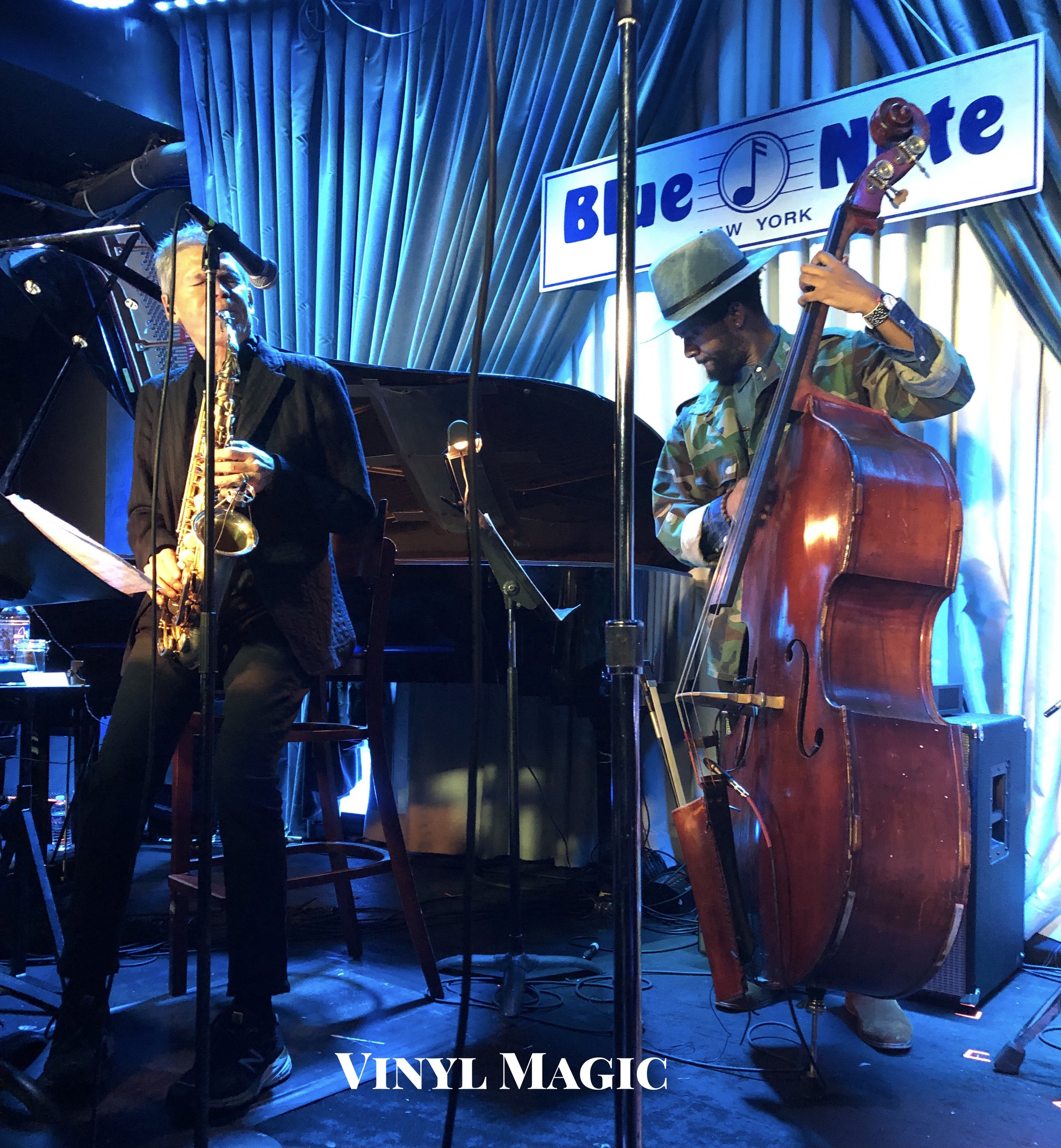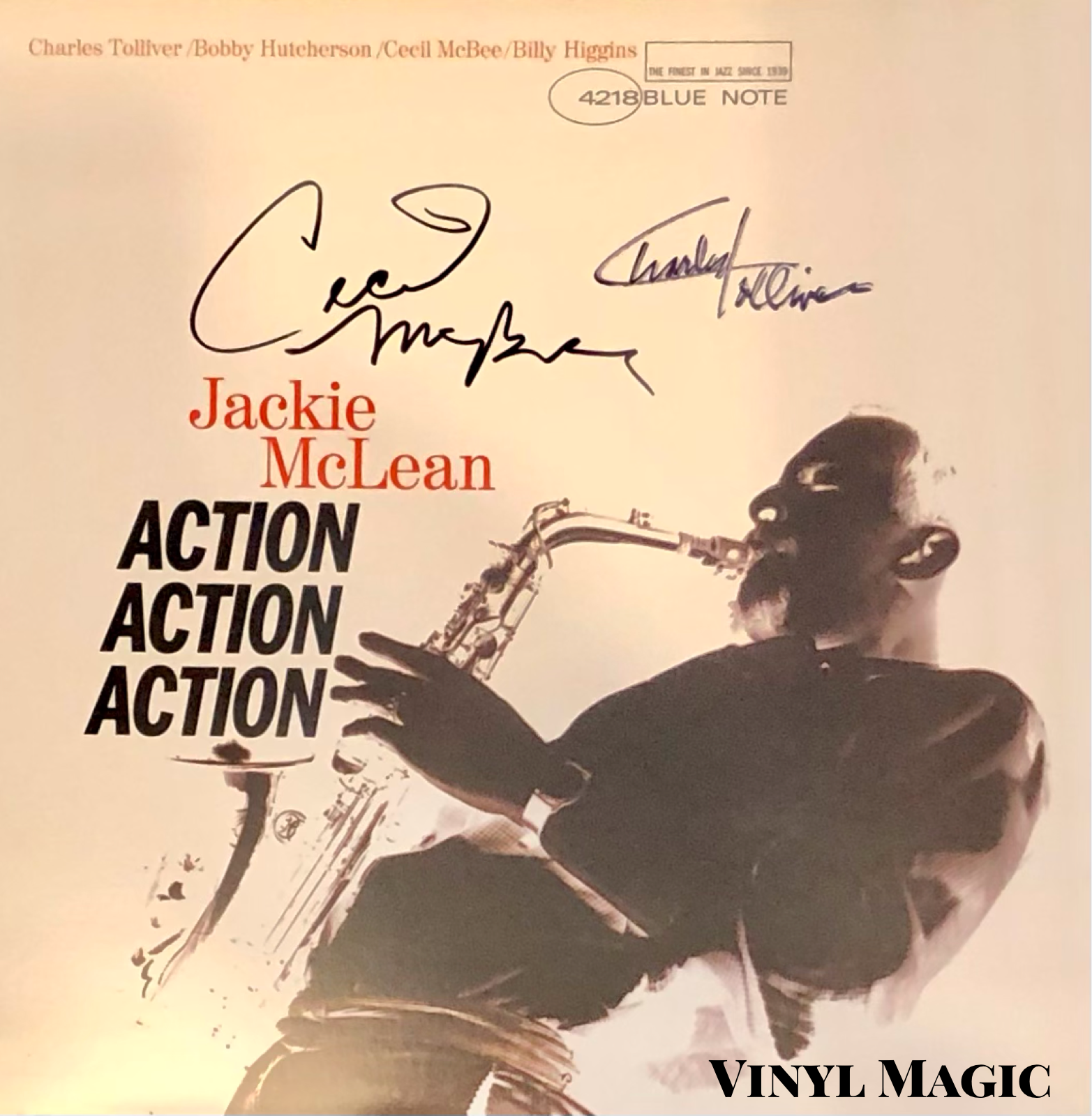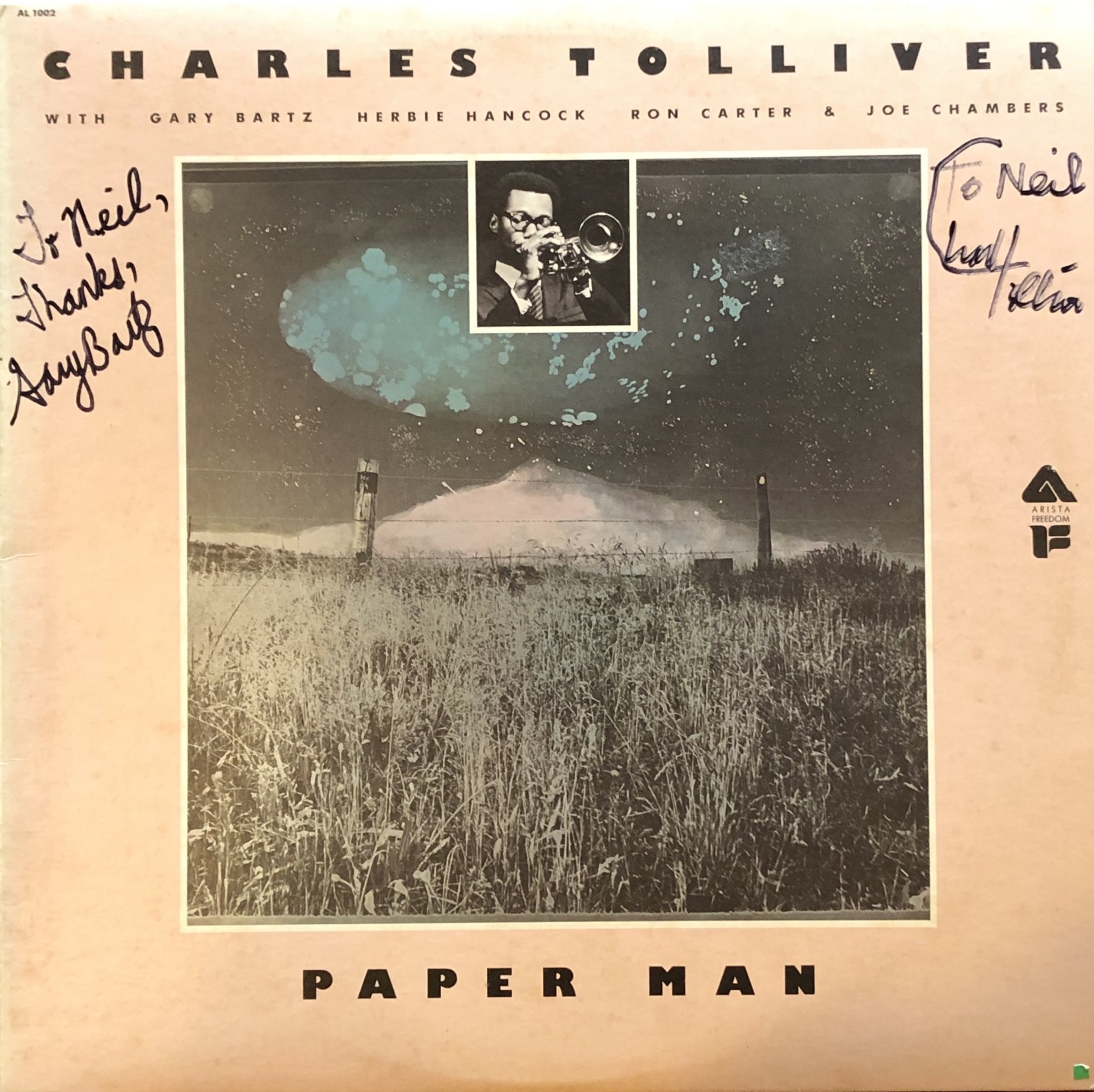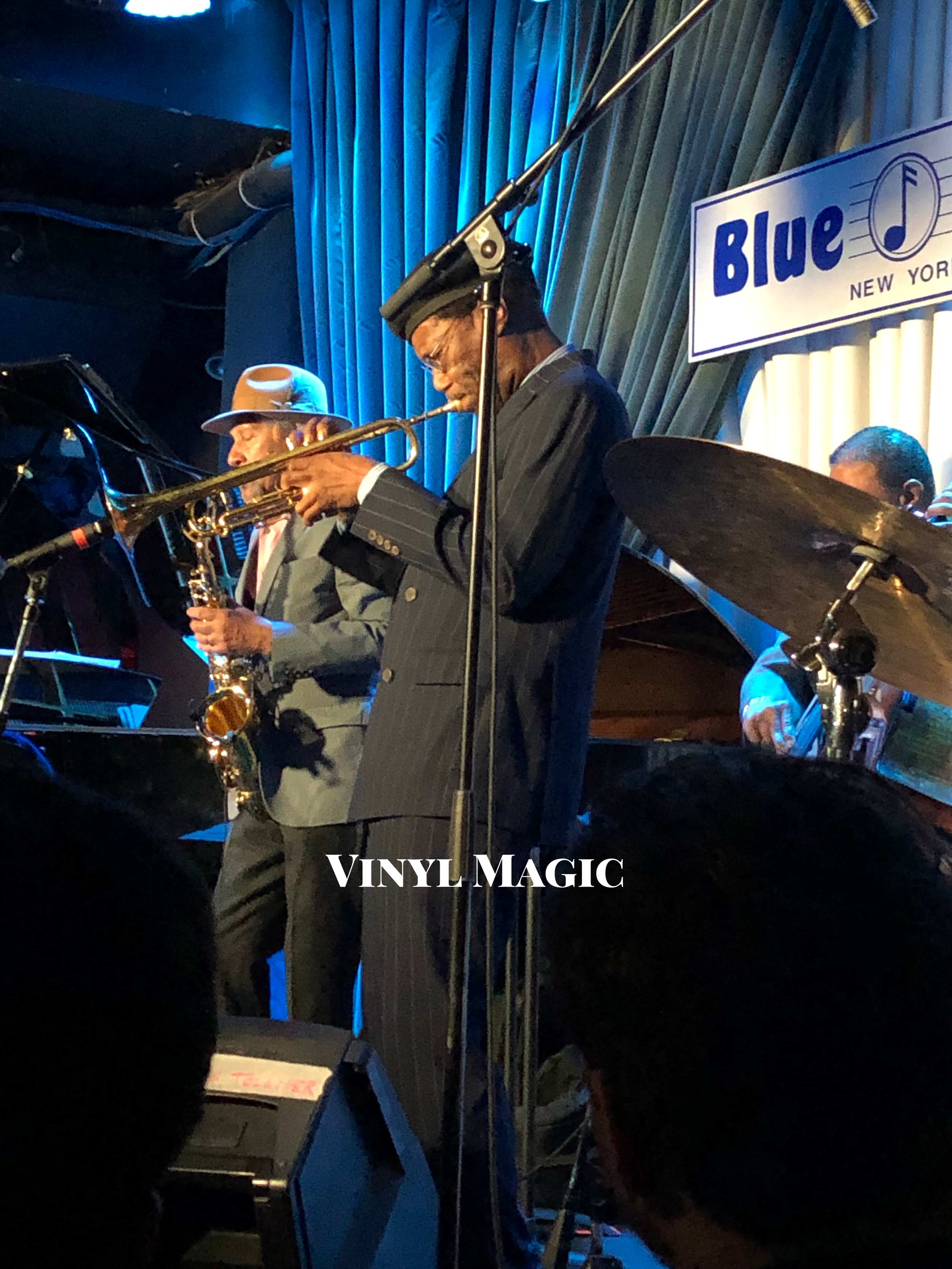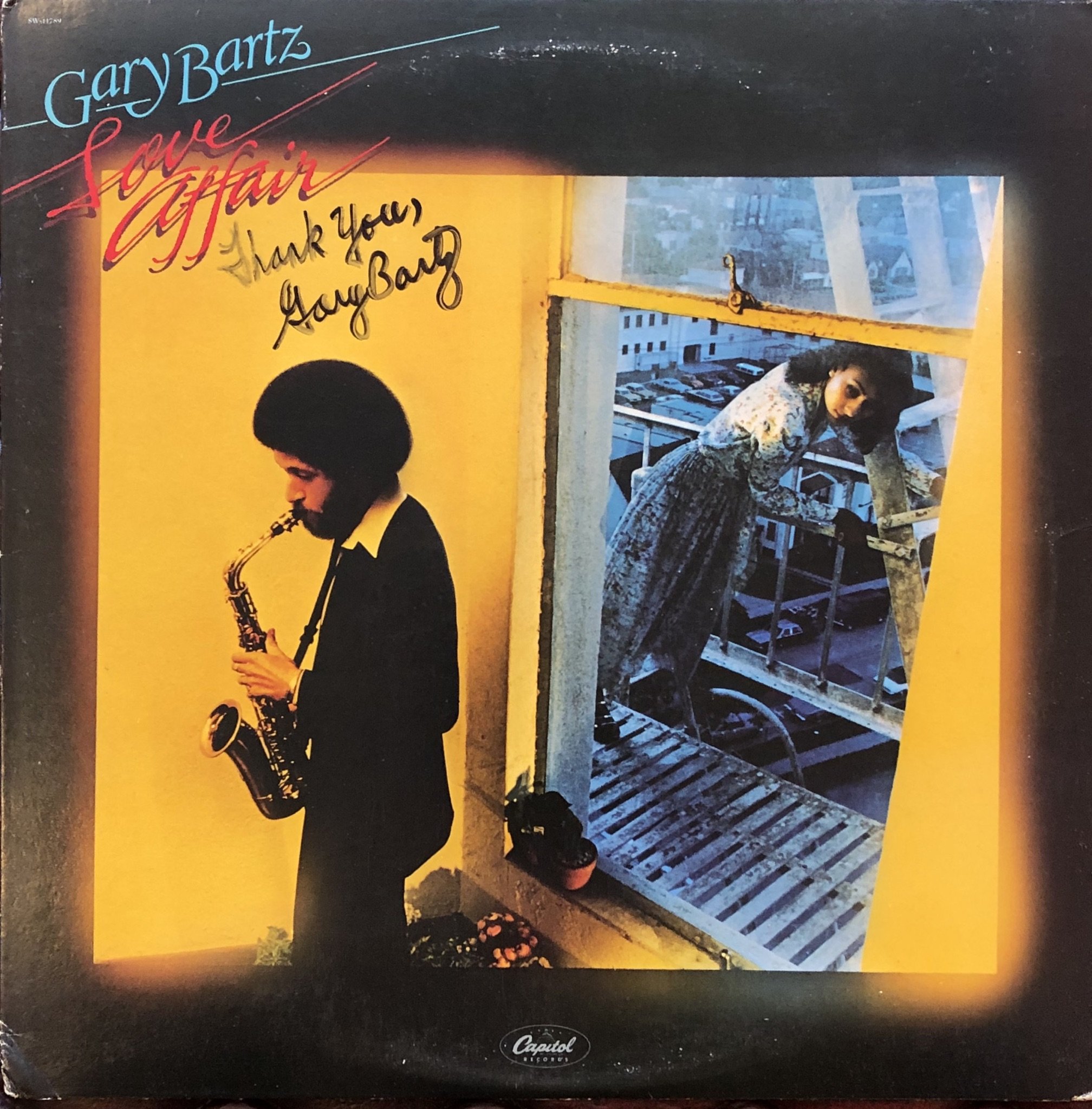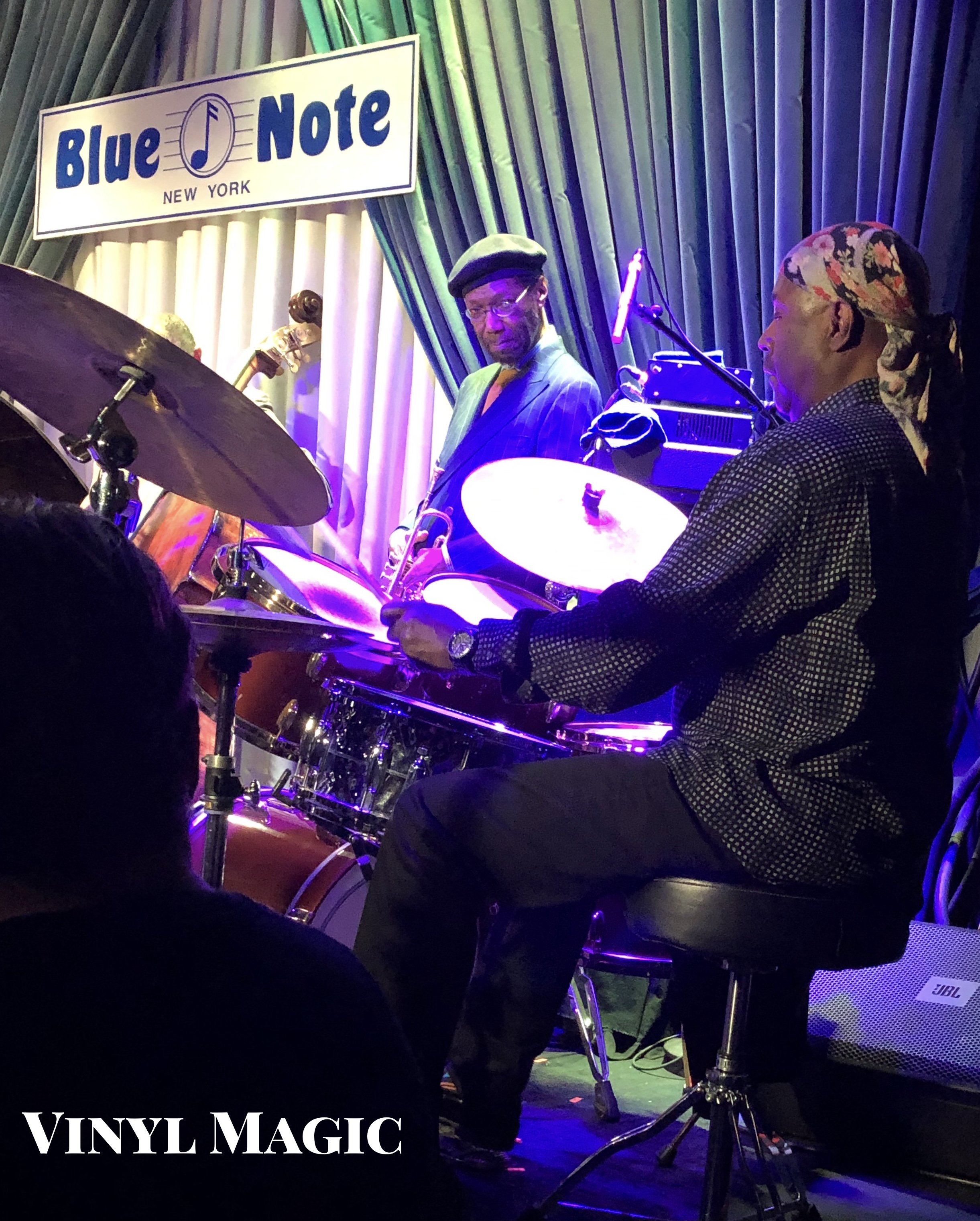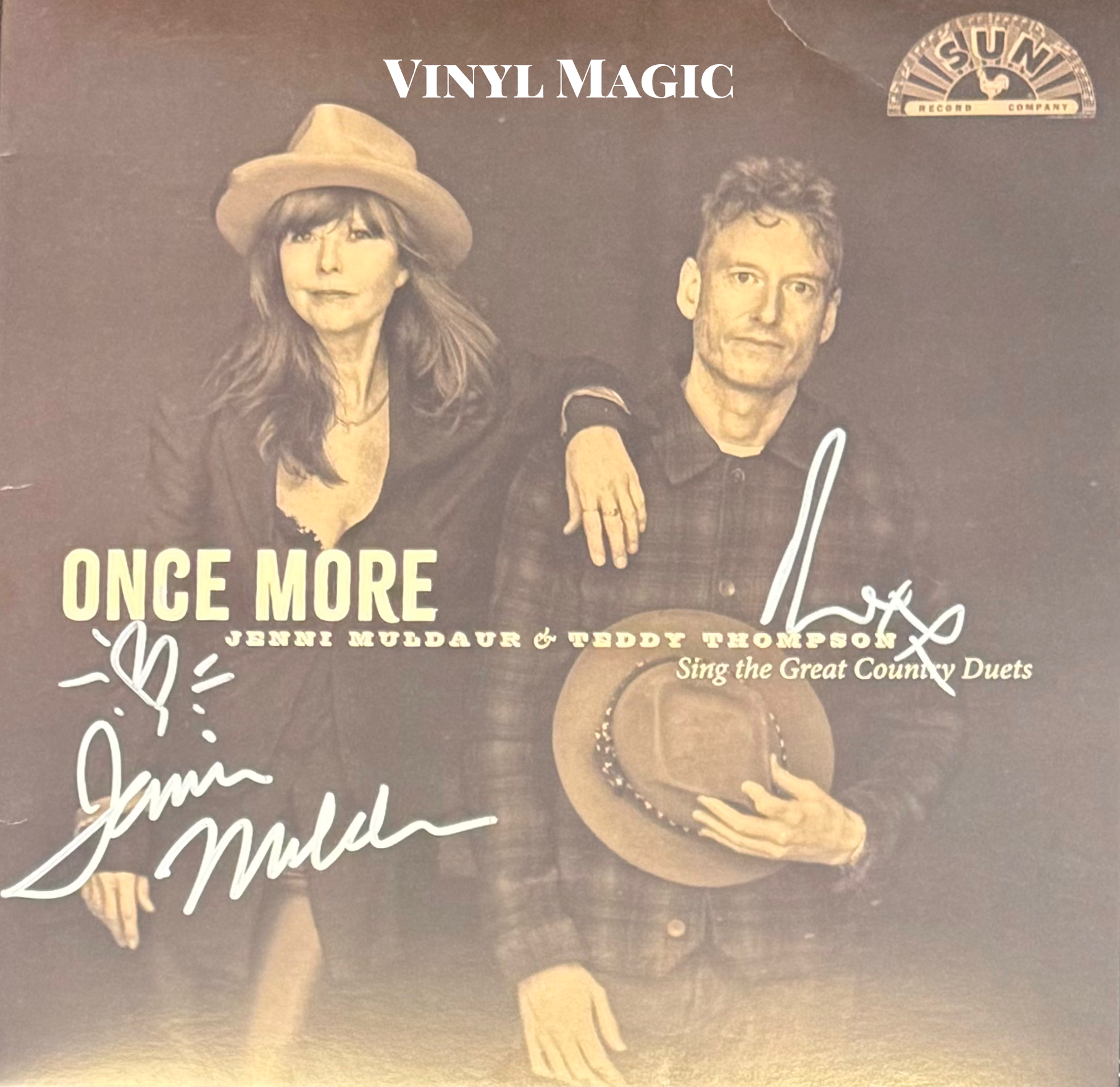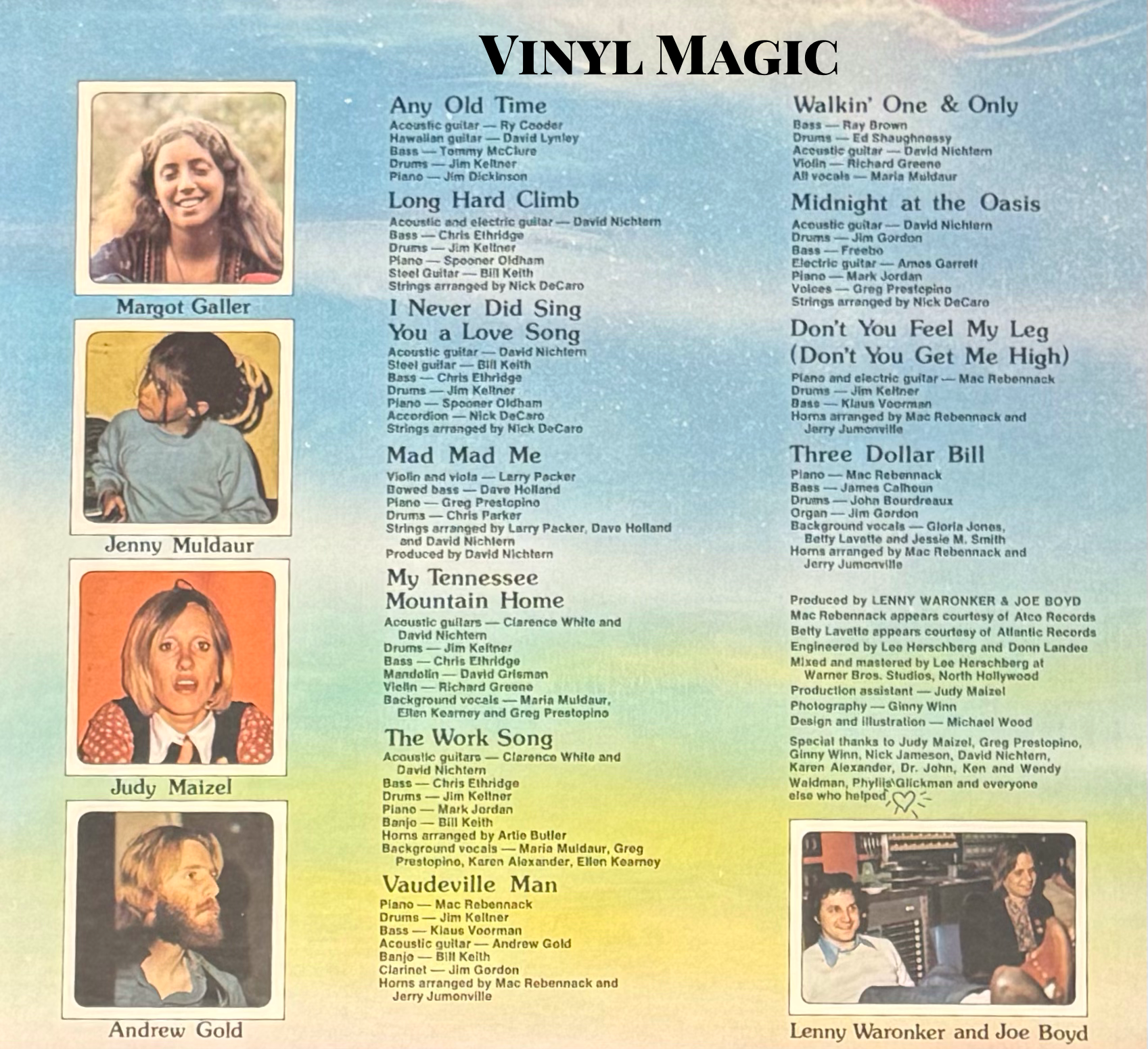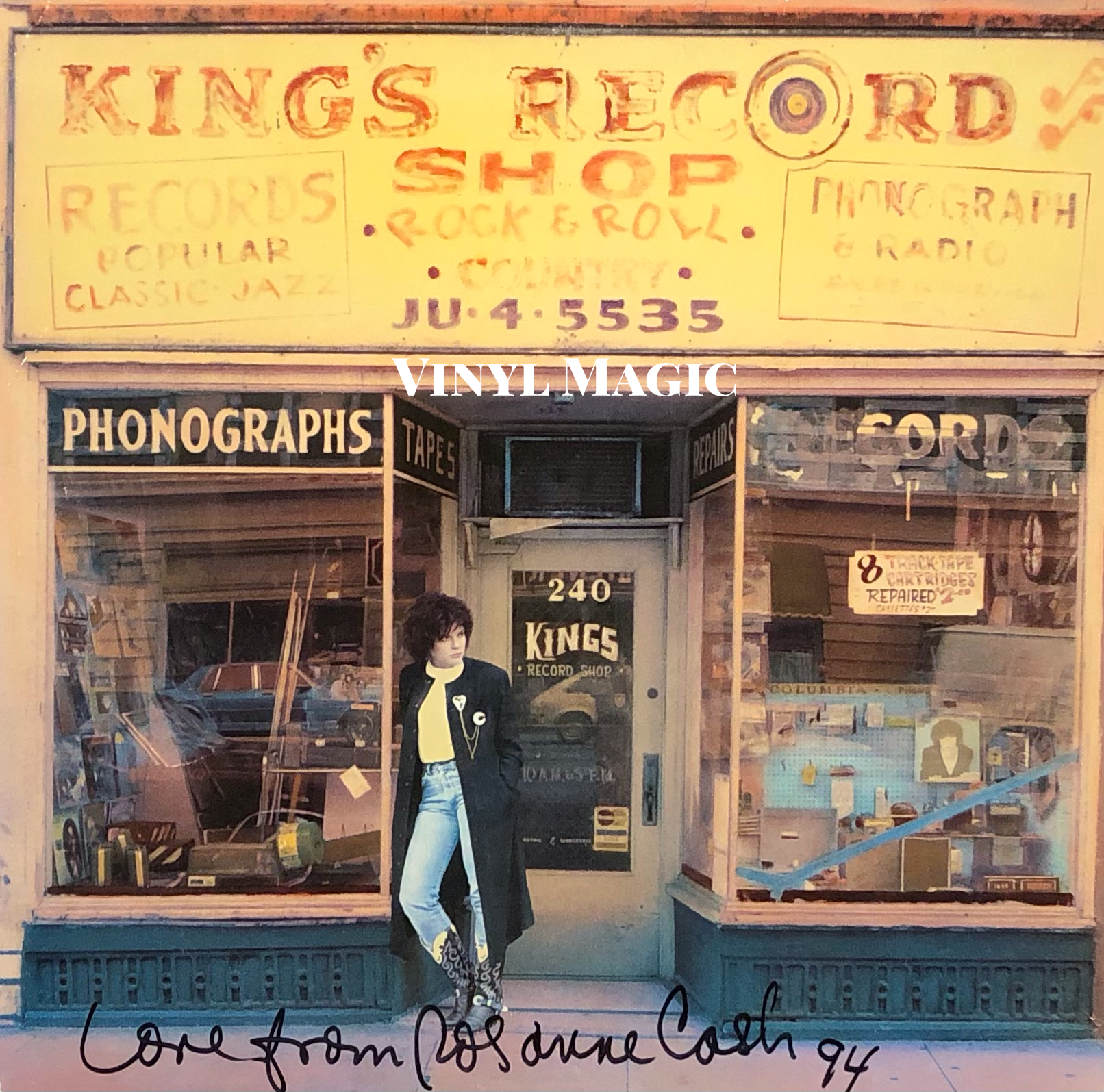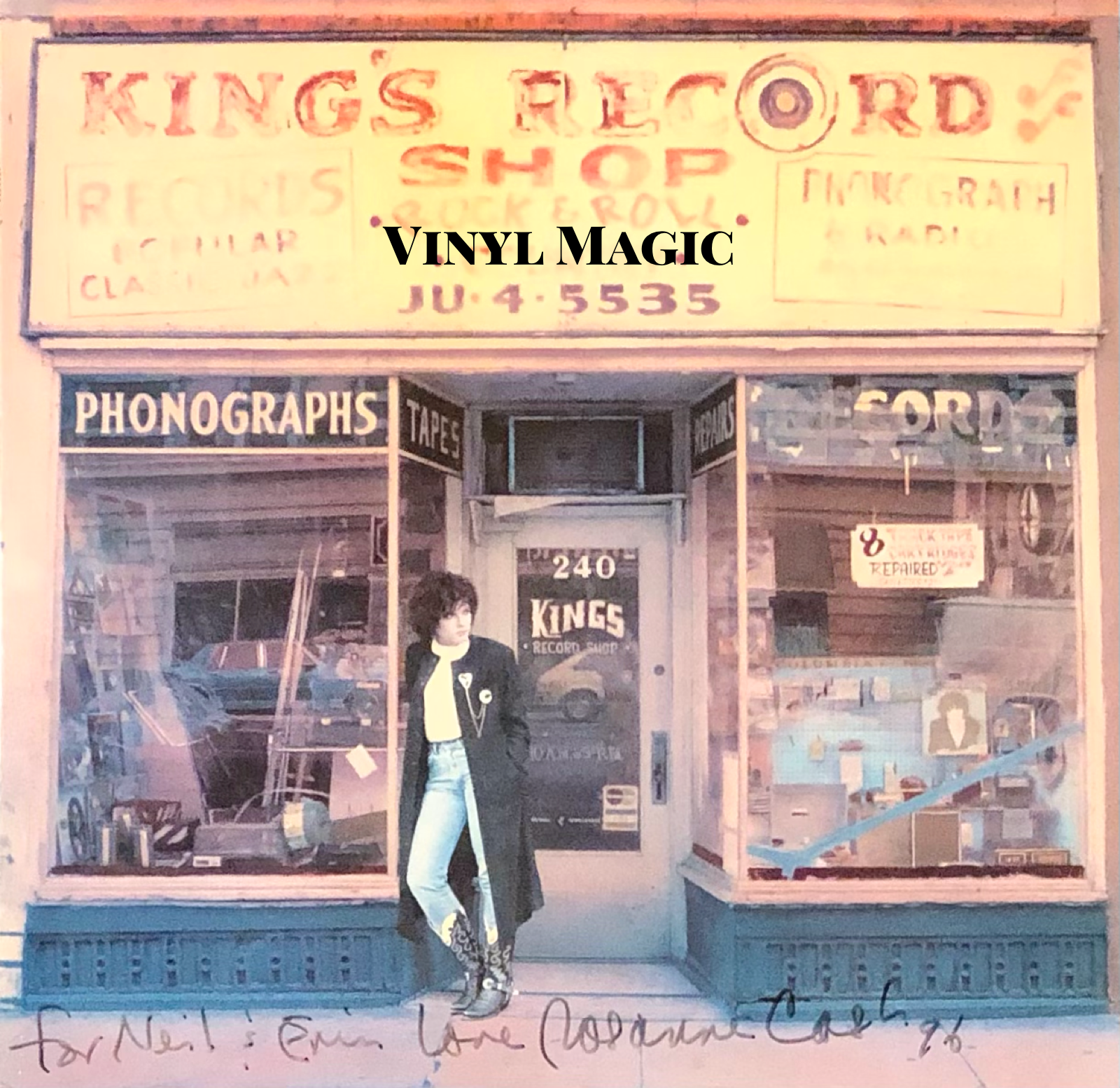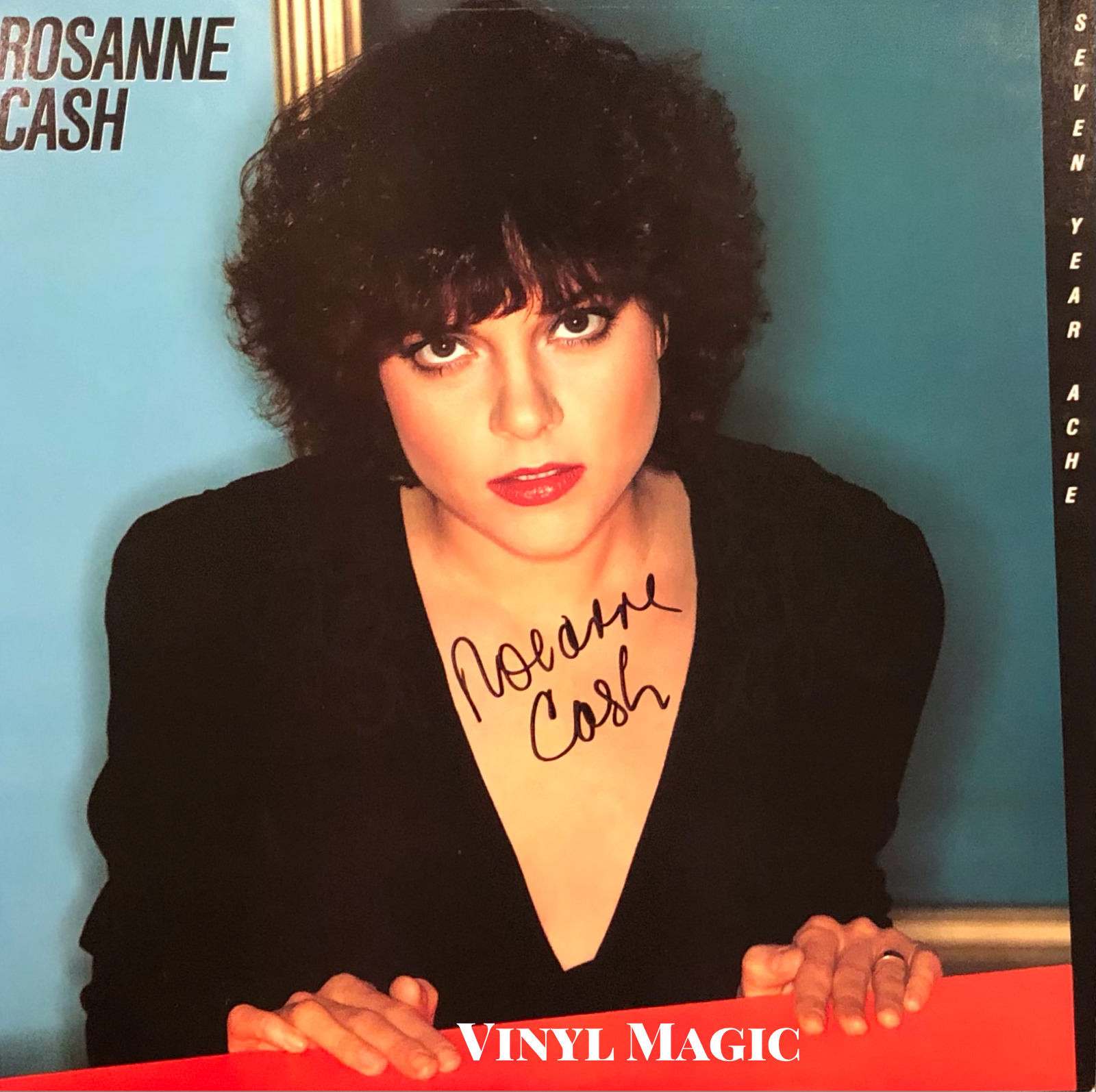Beirut, Zach Condon and Me…
I always knew I wanted to be in a band. But growing up in Santa Fe, if I joined my friend's band, these were hardcore and punk rockers — and I wanted to play, like, accordion and French horn and stuff, it just didn't fit. So, I was that kid. No one ever gave me grief about it, but it was a kind of lonely pursuit.
Zach Condon
I wasn't unambitious. That was clear, and I wasn't dumb either. Besides, even at that age I spent 90% of my time locked in my bedroom playing instruments. That was my castle. The greatest thing about my house was that I was in the far end of it and I could make as much noise as I wanted. By the time I moved out, I had a full-sized piano, two full-sized organs, bits and pieces of a drum kit, and a whole computer set up for Pro Tools. I had this mattress in between the piano and the organ. That was the only walking room.
Zach Condon on his home recording studio
Gulag Orkestar (2005) signed by Zach, Nick Petree, Perrin Cloutier
One of the reasons I named the band after that city was the fact that it's seen a lot of conflict. It's not a political position. I worried about that from the beginning, but it was such a catchy name. I mean if things go down that are truly horrible, I'll change it. But not now, it's still a good analogy for my music. I haven't been to Beirut but I imagine it as this chic urban city surrounded by the ancient Christian and Muslim worlds. The place where things collide
Zach Condon on naming his band Beirut in 2005
I'm not an amazing trumpet player. It's mostly smoke and mirrors. You shake the trumpet and it starts to vibrate in a ridiculous drunken way, or you flop notes at the right time and you don't have to play stuff that would take seven years to learn.
Zach Condon
I still write the same way, since I also still use multi-tracking as a means of writing and throwing sounds together. I still make very repetitive music. I still reach for the same chord voicings very instinctively. I recognize a very certain melodic sensibility, and I clearly hated writing down words back then as much as I do now. I think I still feel like tone and melody, harmony and rhythm paint more vivid pictures than words. They still hit somewhere much deeper for me. I still seem to both be seeking out new sounds and gravitating towards very similar and specific dense, rich chord tones.
Zach Condon, 2022 interview
Lon Gisland (2007) signed by Zach, Nick Petree, Perrin Cloutier
I get asked a lot of questions about all the shows that I have seen. What's the best? The worst? The biggest? The smallest? There are no easy answers. The most interesting venue? A couple spring to mind. In the late 1980s, American Express sponsored a free concert by the Ray Charles Orchestra at the Mazza Gallerie in Chevy Chase, Maryland. A Sunday afternoon in the mall with Ray Charles, the Raylettes, and his twenty piece band set up in the entrance to a Nieman Marcus store. Ray and the band were in full flight and it was definitely my most rewarding trip to a mall ever! Another interesting location and show was Plas Johnson performing in the lobby of the Los Angeles International Airport Hilton. Plas is a wonderful tenor saxophonist best known for his signature groove on the oft recorded Henry Mancini "Pink Panther Theme." Amid the tourists, travelers, ferns and industrial furniture, Plas and friends laid out some thick, soulful grease. And then there was James Brown, "The Godfather of Soul", "Soul Brother #1", and "The Hardest Working Man In Show Business." JB and his fourteen piece band played in a tent in a parking lot outside Mitchell's, an exclusive haberdasher in Westport, Connecticut for a grand re-opening in 2003. JB more than lived up to his nicknames and reputation as he got all of us up offa that thing!
Some very memorable shows and locations, but I guess my favorite venue (and show) was seeing Beirut at the Frank Lloyd Wright designed Guggenheim Museum in New York City in July, 2010. Before the show, patrons were encouraged to explore the spiral, swirling staircases of Wright's brilliant design and view the installations of "Haunted: Contemporary Photography/Video/Performance." While awaiting Beirut's live performance on the ground floor, Erin and I toured the exhibits. Mostly, I thought the videos were a mishmash and an incoherent jumble, however, the performance by Beirut did not disappoint. They were remarkable.
Beirut is the invention of the wunderkind Zach Condon. Born in Albuquerque and raised in Santa Fe, New Mexico, Zach was exposed to music in his youth, in particular, jazz and local mariachi bands. Zach also revealed his father's influence: "My dad is obsessed with music, so I was raised around this guitar player that really wanted me to be a guitar player. One of my earliest memories is him kind of forcing a guitar on all my brothers and me. You know, 'You have to practice three hours a day!' I hated guitar at the time, I kind of picked up trumpet to spite him."
Zach's anger was wonderfully redirected as he honed his craft and played first trumpet in his high school jazz band before dropping out at seventeen to travel to Paris with his older brother. In Paris, Zach was exposed to Balkan and other Eastern European sounds like the Kocani Orkestra as well as French chanson, the melodies of Serge Gainsbourg, especially the music of Jacques Brel, "The way Jacques Brel writes a story, getting into the character, bringing out all his faults and qualities in the same song....I love the songs of his where he becomes a ranting drunk, then a sentimental, and then bitter and angry. Not that I could ever write in such an epic way, but it really is a different way to go about writing lyrics. And I find that quite inspiring." Pretty heady stuff for a teenager, but Zach Condon is a most uncommon talent.
When Zach returned, he began Gulag Orkestar, Beirut's debut, which was recorded largely in his bedroom, with Zach playing ukulele, trumpet, piano, organ, percussion, accordion and mandolin. And he sings his ass off! His voice is at times worldly and world weary, at others, expansive and extravagant, clearly, not the voicings and musings of an ordinary nineteen year old living with his parents. The Balkan and Eastern European influences are undeniable, and more inspiration was derived from a yellowed, frayed photo torn from a book which Zach found in a library in Leipzig, Germany. It depicted two woman roadside, reclining on a Russian car. Zach explained, "I found that photo and I took it home with me. It was hanging on the wall the entire time and I always kind of felt like, 'It's got to sound like that, it's got to sound the way that looks.' " This photo became the cover on Gulag Orkestar when it was released in 2006. The liner notes confirm the provenance of the photo and ask for help in identifying the (then unknown) photographer. Subsequently, it was disclosed that Sergey Chilikov, an obscure Russian photographer, snapped the shot and Sergey's career has been revitalized through a much needed bump in interest.
The Flying Club Cup (2007) signed by Zach, Kelly Pratt, Nick Petree, Perrin Cloutier
The Flying Club Cup, Beirut's second album, was released in 2007 and was influenced by a Leon Gimpel photo of hot air balloons massing near the Eiffel Tower in Paris in 1906. Gimpel is noted for being the first photographer to introduce color in his work at the World's Fair in 1906, and Zach was struck by the surrealism in this photo. Unfortunately, the rights to use the Gimpel photo couldn't be worked out but the album title stuck. As Zach noted, this album is a direct homage to Jacques Brel:
"I was listening to a lot of Jacques Brel and French chanson music - pop songs shrouded in big, glorious, over-the-top arrangements and all this drama - and that was in some sense unfamiliar territory to me. So I started buying new instruments and relying on things I wasn't necessarily comfortable with, like French horns and euphoniums, carrying these big, epic big brass parts that I used to do all on trumpets, and working with accordion and organ instead of all ukulele, very much throwing myself in the world of classical pop music..."
The show at The Guggenheim in 2010 was a nice mix of new songs - "East Harlem", "Mimizan" - and older songs - "Postcards From Italy", "Nantes", "A Sunday Smile", "Elephant Gun" and "Scenic World", and the accompaniment from his tight band included drums, accordion, piano, trumpet, trombone, euphonium (think poor man's tuba), upright bass, and ukulele. All band members are multi-instrumentalists so there was a lot of trading off on instruments, a trumpet might be swapped for a trombone, an accordion might be dropped for a piano, and Zach started some songs on ukulele, before setting it down and playing trumpet. Zach's songs and vocals tend to sweep and soar and become anthemic, which is unusual given the old school instrumentation.The encore was a mournful, Balkan inflected dirge, "Gulag Orkestar" with lots of brass and a proper funereal drum beat by Nick Petree.
After the show, Erin and I visited with several band mates as they waited outside on the sidewalk. They were very excited to play such an iconic museum and, after signing some vinyl, they assured us that Zach would soon join them. There was a cluster of six or eight of us when Zach appeared through a side door. As loquacious and bubbly as he was on stage, he was humble and shy off stage. I mentioned how much my kids enjoyed his music and that my son was also playing trumpet. He smiled, took the Music Hall of Williamsburg poster, said "Maybe this will inspire him," and he signed it, "To The Trumpet". Erin and I were happy to spend time with such talented and generous musicians.
Music Hall of Williamsburg, July 5,6 2010 signed by Zach
Beirut has released a couple more albums since playing The Guggenheim and I have seen them again, but there was nothing quite like that venue and performance. Like Zach, I was surrounded by music growing up, and Erin and I have instilled a love and passion for music in our children. We agree with Friedrich Nietzsche who said, "Without music, life would be a mistake." My son Brendan still plays trumpet (it's gotten cool again with Chance, Kendrick and Kanye all dropping trumpet samples!), my youngest daughter Camryn plays ukulele, and my eldest daughter Kendall has a beautiful singing voice and dangerous moves on the dance floor. For her Sweet Sixteen birthday, Kendall burst into tears of joy when we gave her the signed, framed copy of The Flying Club Cup. It doesn't get any better than that!
Thanks Beirut and Zach for all your great music. Your best is yet to come.
all photos copyright by Dominick Mastrangelo @brooklynvegan.com
Choice Beirut Cuts (per BK's request)
https://www.youtube.com/watch?v=jc3ZAs17uAg
"Nantes" Live 2007 on the streets of Paris La Blogotheque - A Take Way Show Collect them all!
https://www.youtube.com/watch?v=u6vuKEhwTbo
"Long Time" Chance The Rapper samples "Nantes"
https://www.youtube.com/watch?v=4LfJ0ZKxW7s
"Siki Siki Baba" Beirut live Kocani Orkestar cover!
https://www.youtube.com/watch?v=JLdCoVnESs
"Gulag Orkestar" Live 2009
https://www.youtube.com/watch?v=kQ4qXMzpH-Y&list=PLC8479FFD675AD19D&index=2
"A Sunday Smile" La Blogotheque - A Take Away Show
https://www.youtube.com/watch?v=zw3Hb1N5ysY&list=PLC8479FFD675AD19D&index=8
"In The Mausoleum" percussive watermelon and range top and hood high hat - La Blogotheque - A Take Away Show
Nick Petree: "The watermelons sounded pretty good. I don't know whose watermelon it was."
https://www.youtube.com/watch?v=DFN-Slt370w&index=12&list=PLC8479FFD675AD19D
"The Flying Club Cup" denouement dans une eglise La Blogotheque - A Take Away Show
https://www.youtube.com/watch?v=iuwCU0wXPcg
"After The Curtain" live Brussels 2007
https://www.youtube.com/watch?v=Sb_ChNM6HDo
"Scenic World" Beirut 2006
https://www.youtube.com/watch?v=29UMACdfyZw
"Irish Celebration" Macklemore samples Beirut's "Scenic World"
Beirut set list Guggenheim Museum, NYC , July 15, 2010


